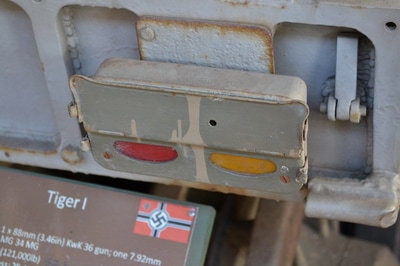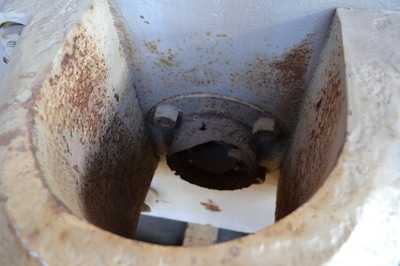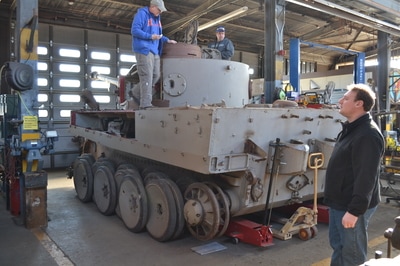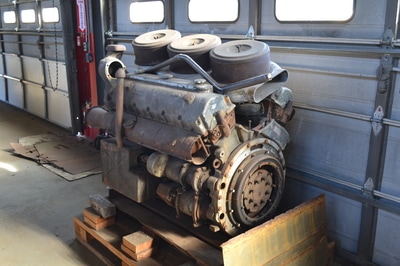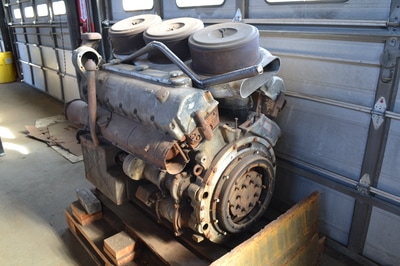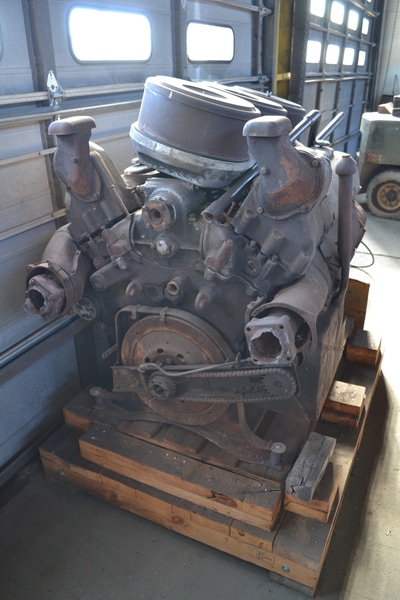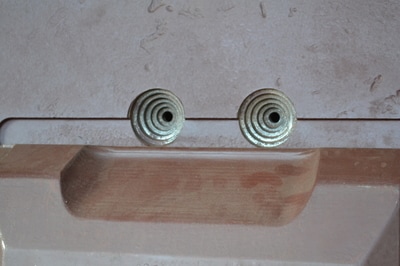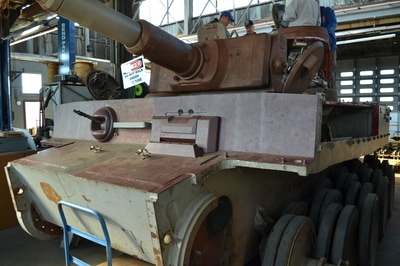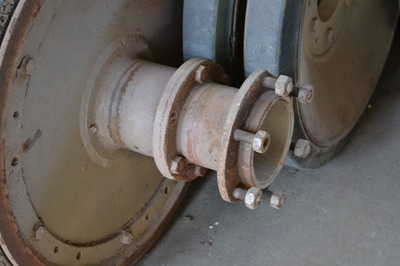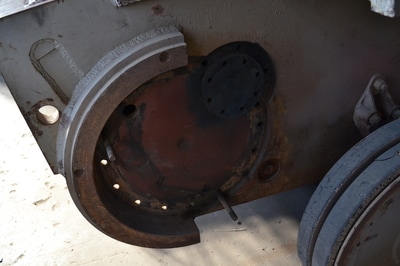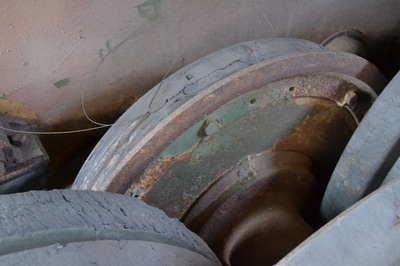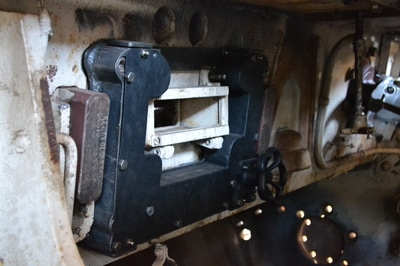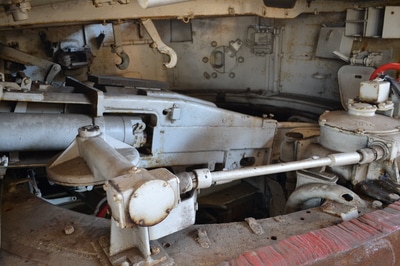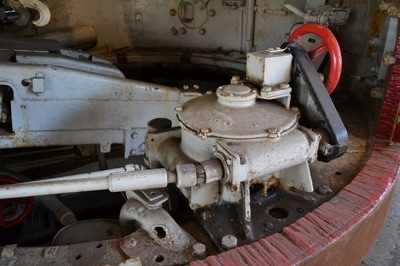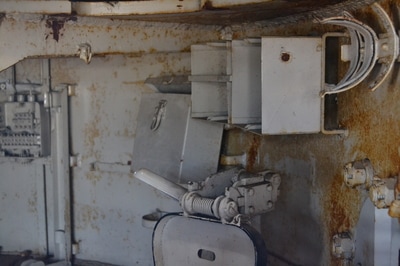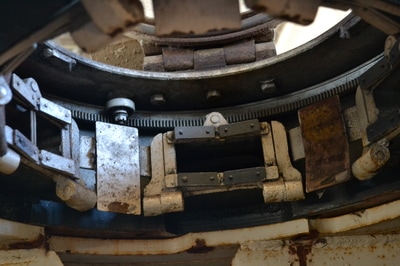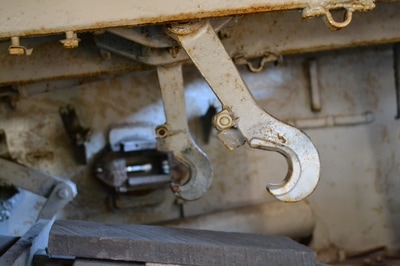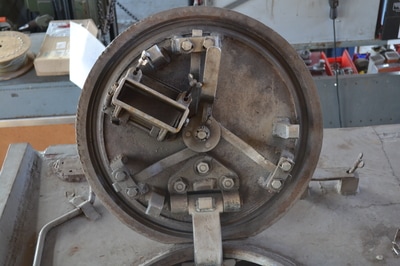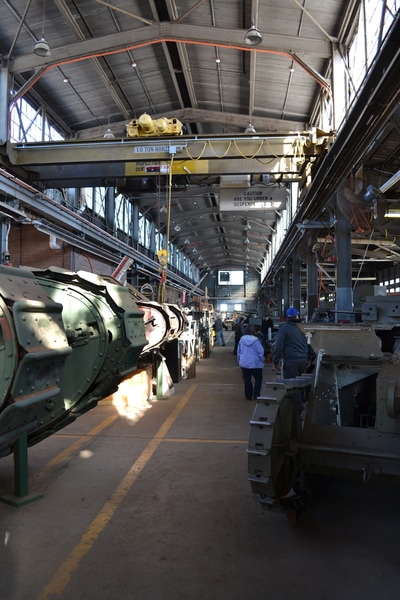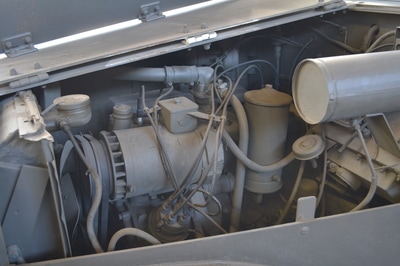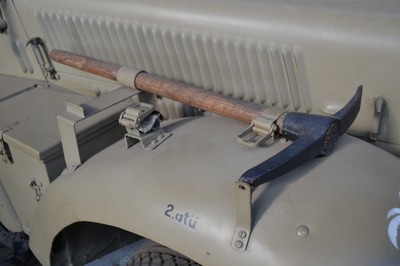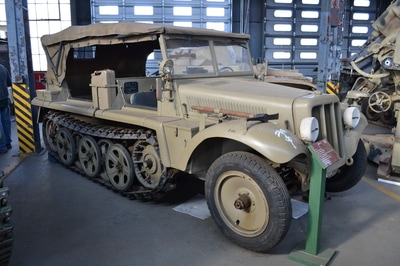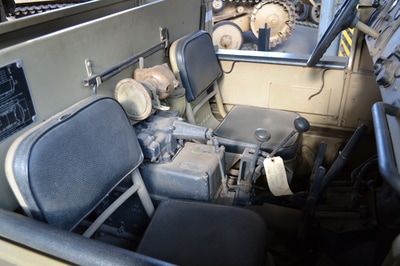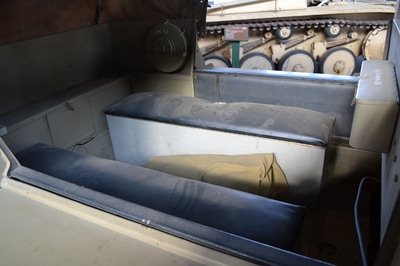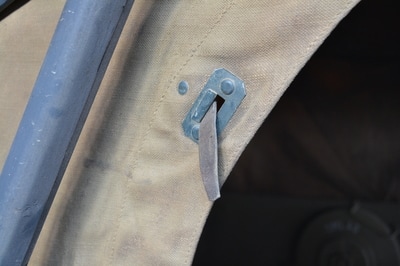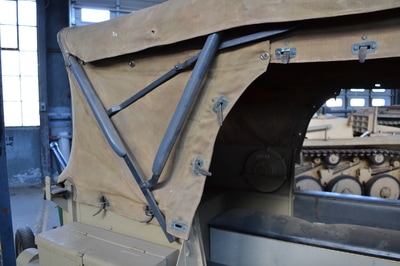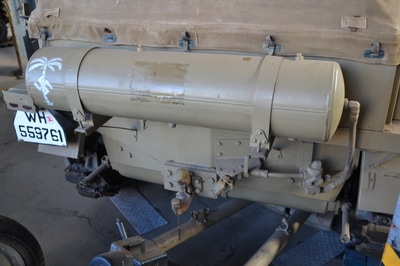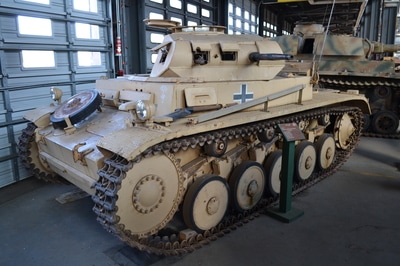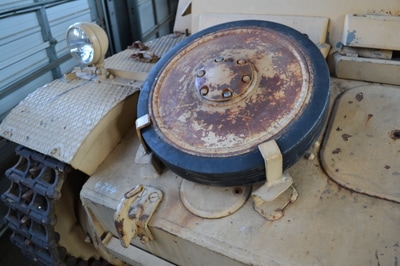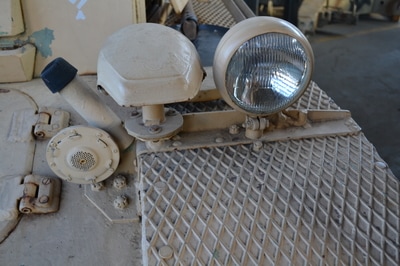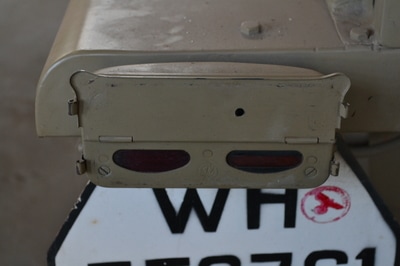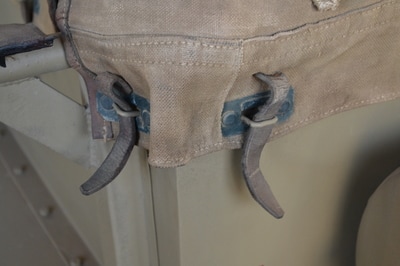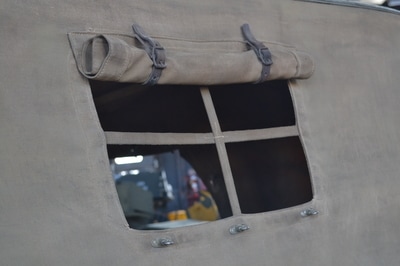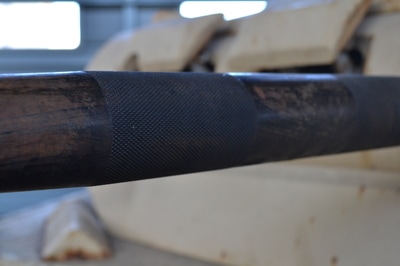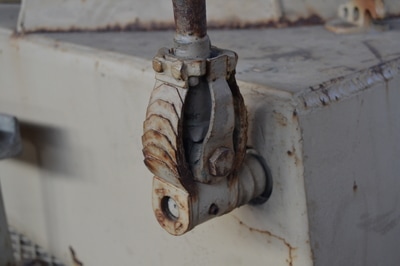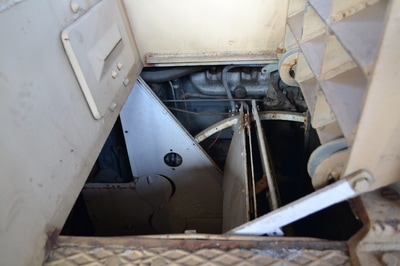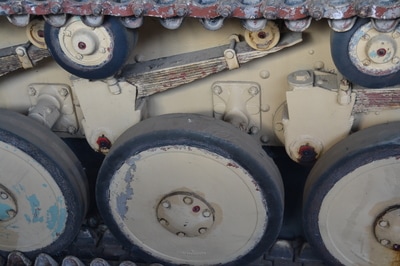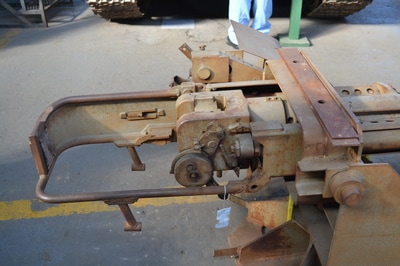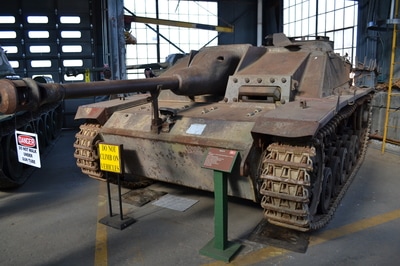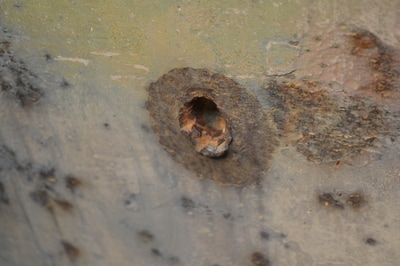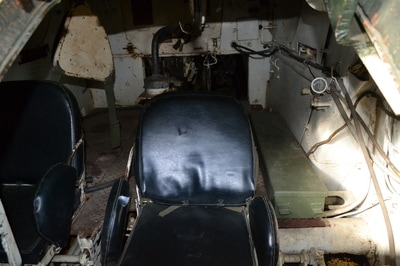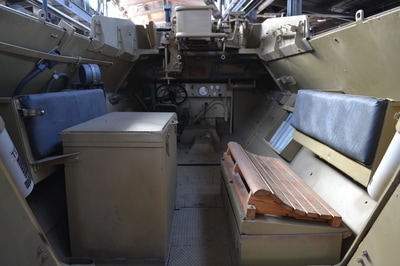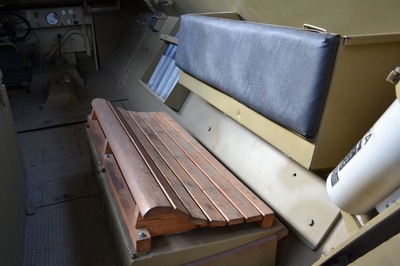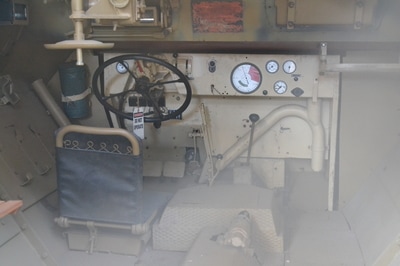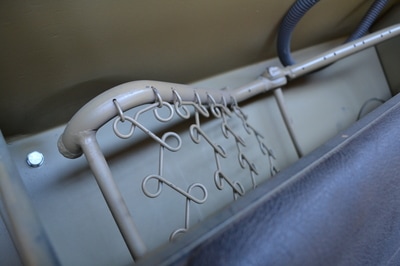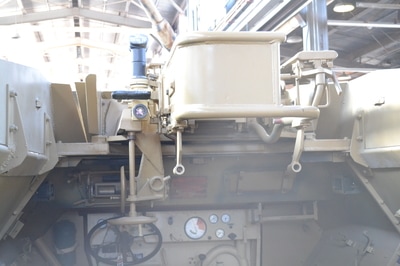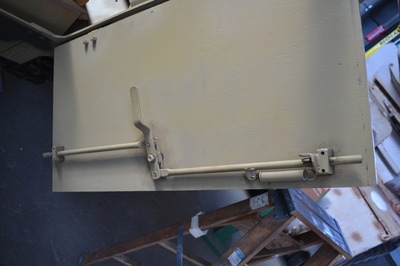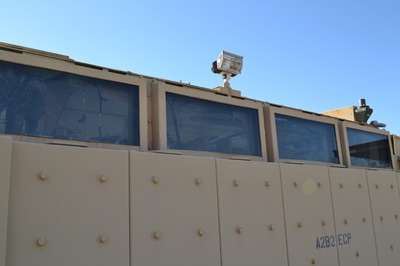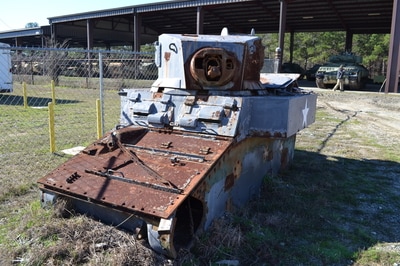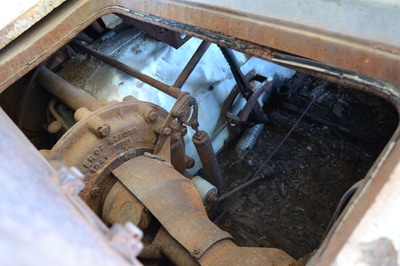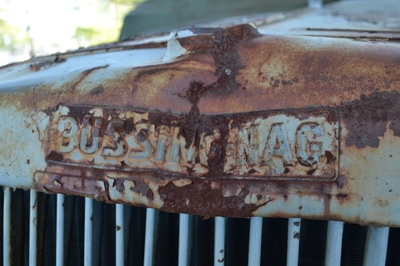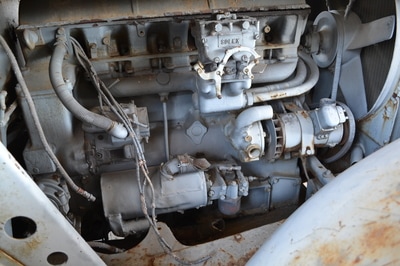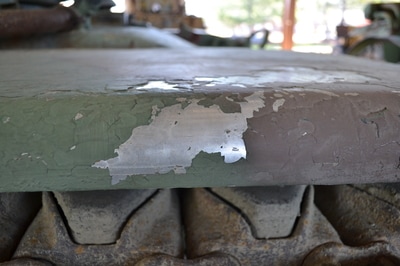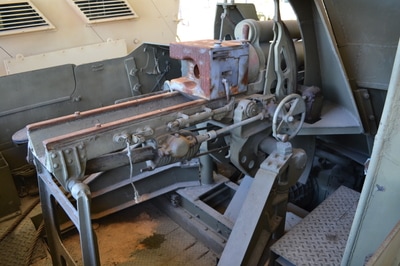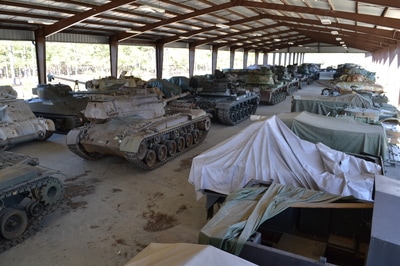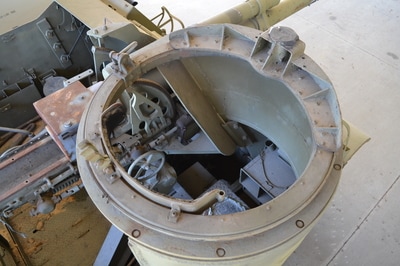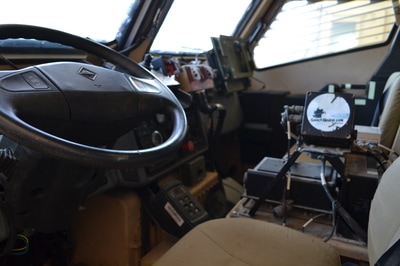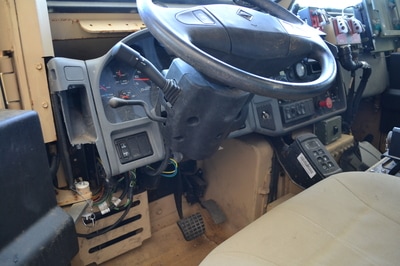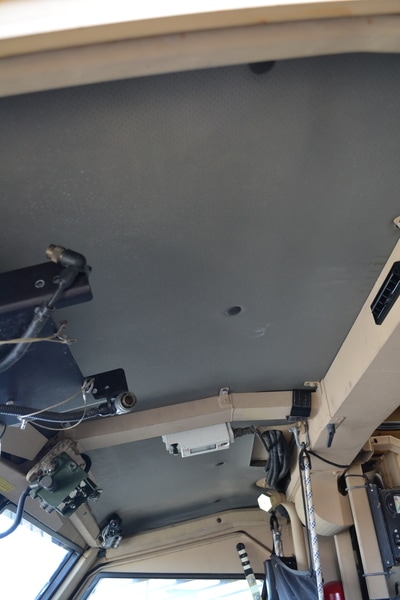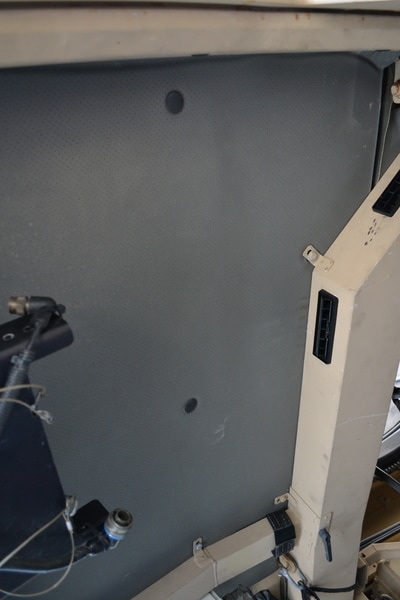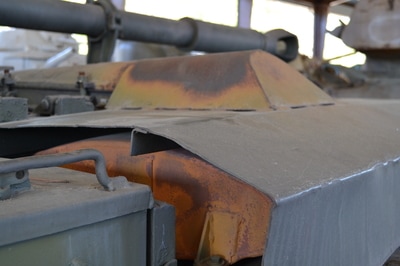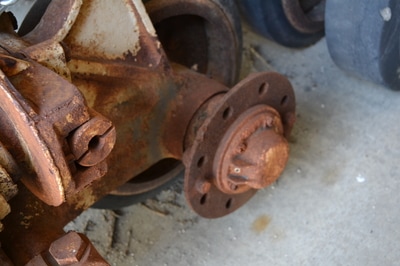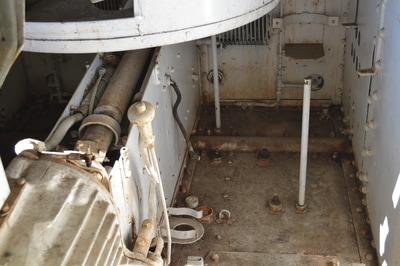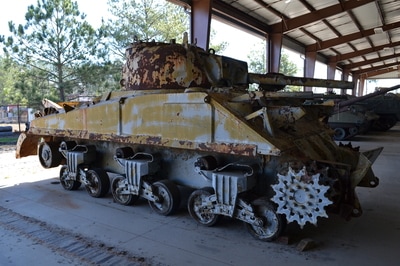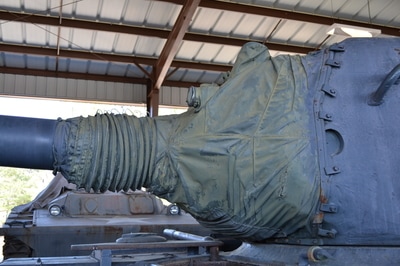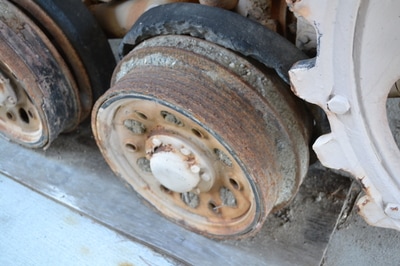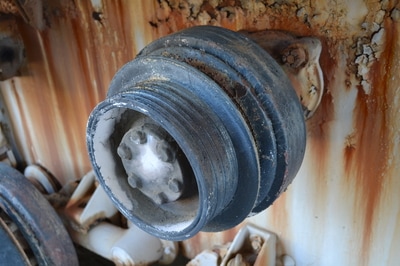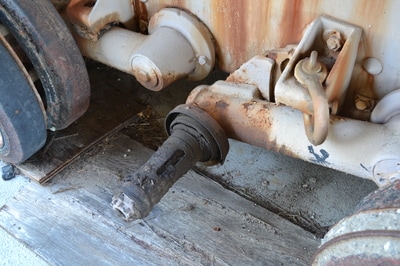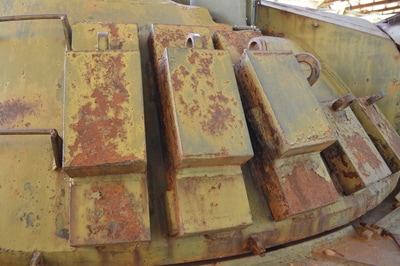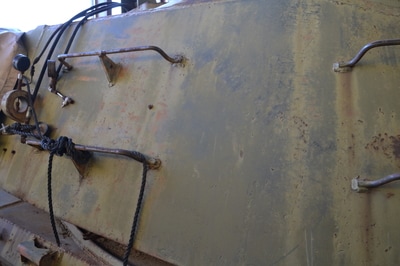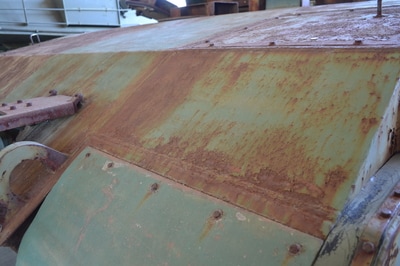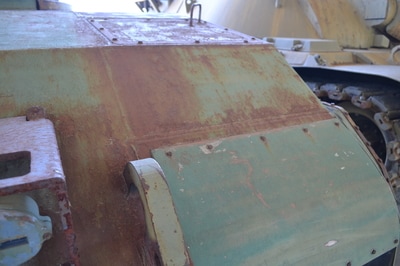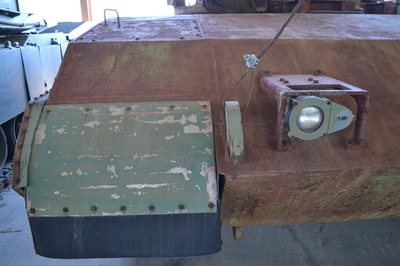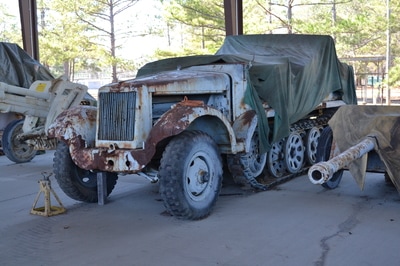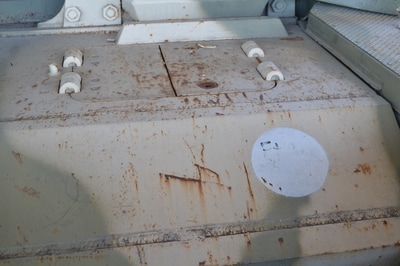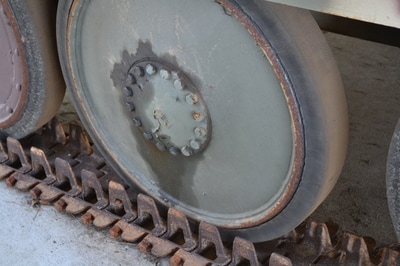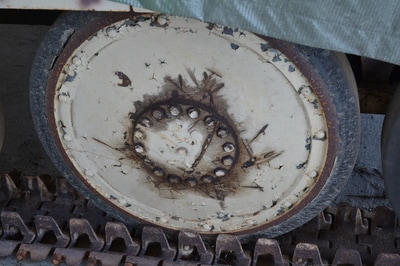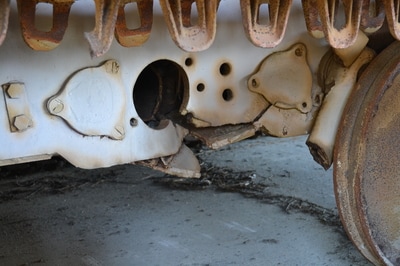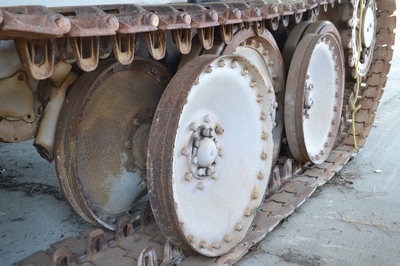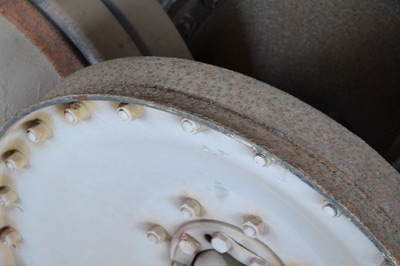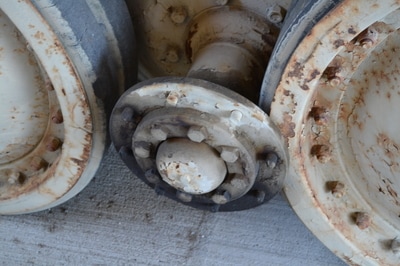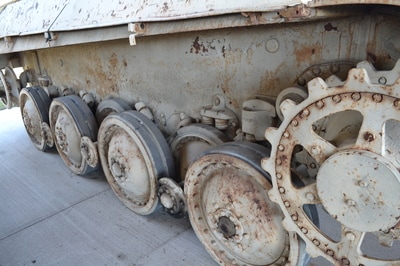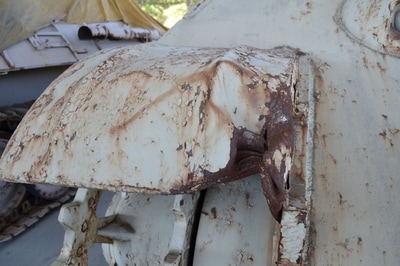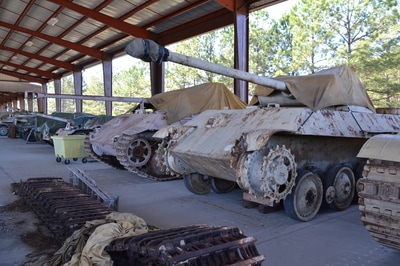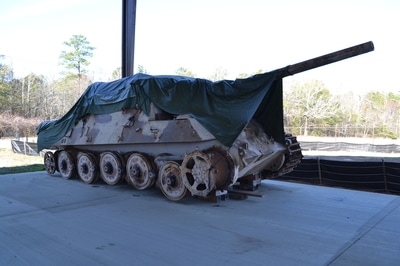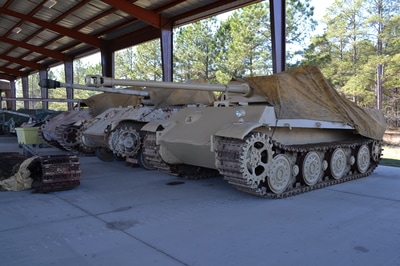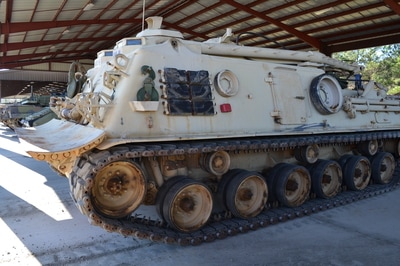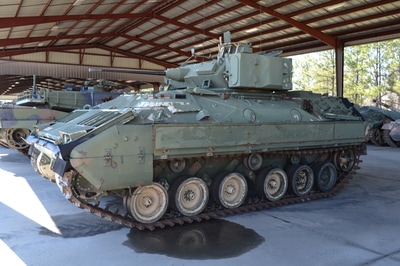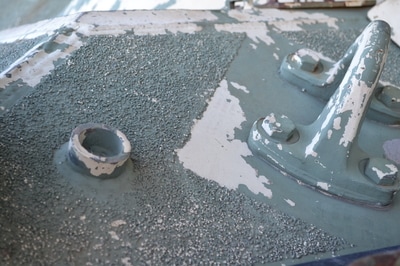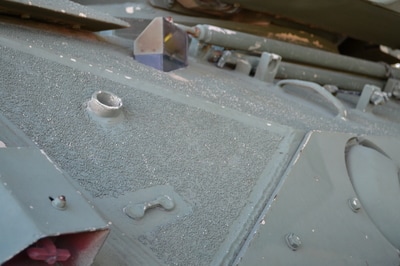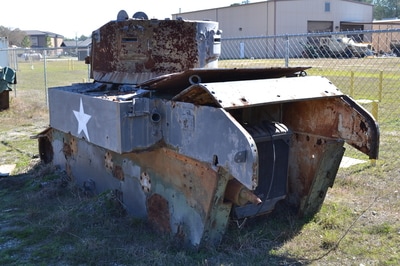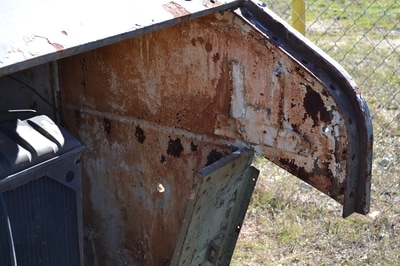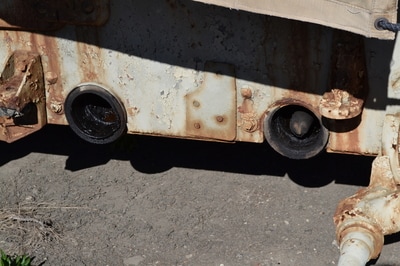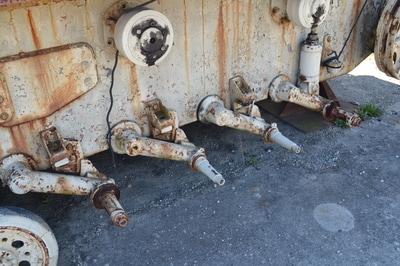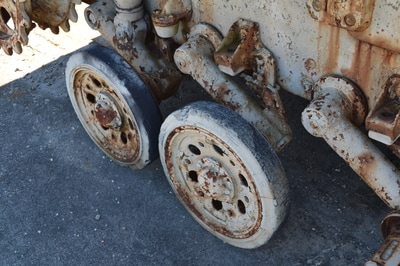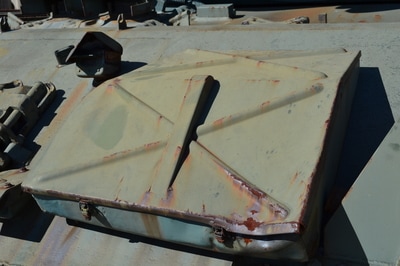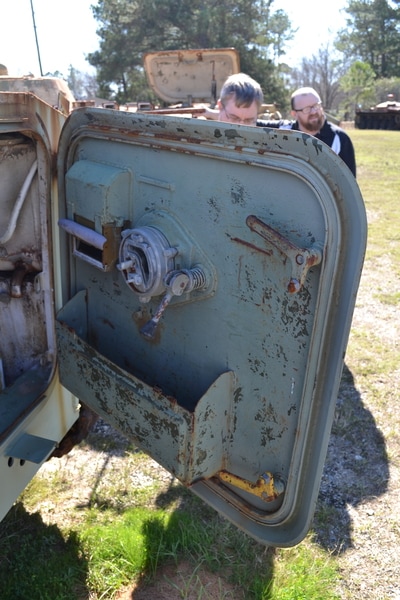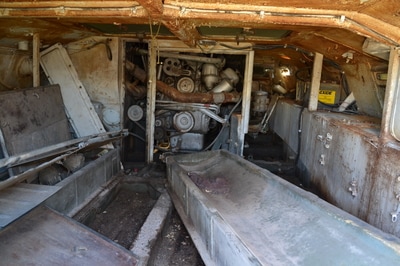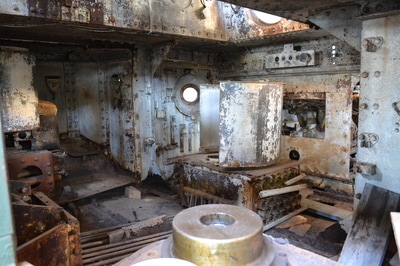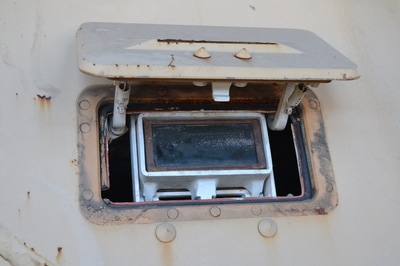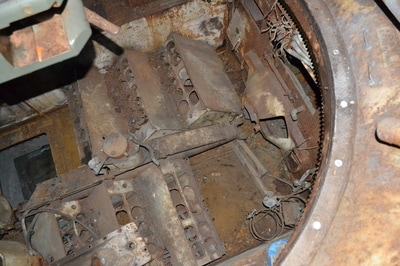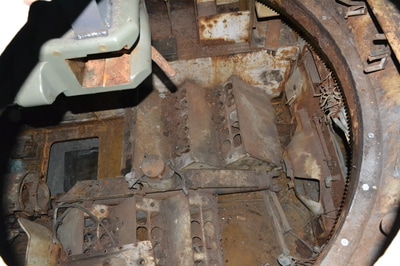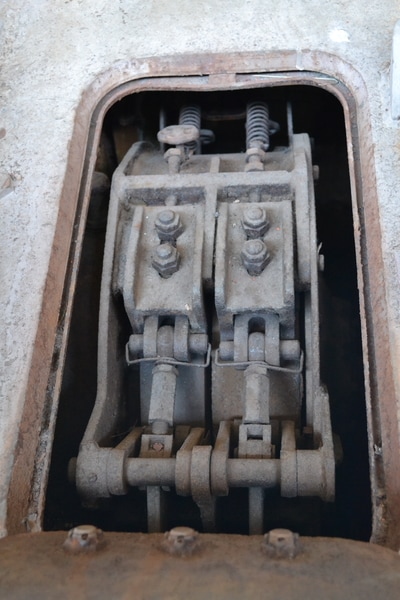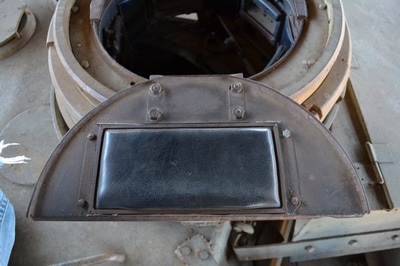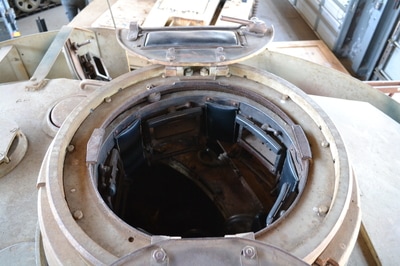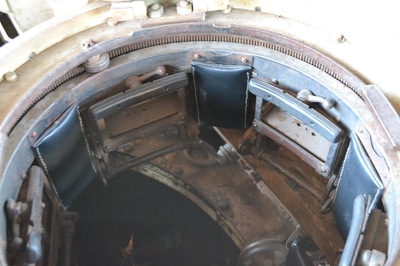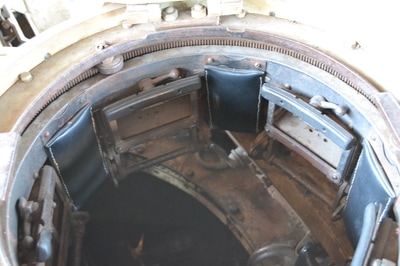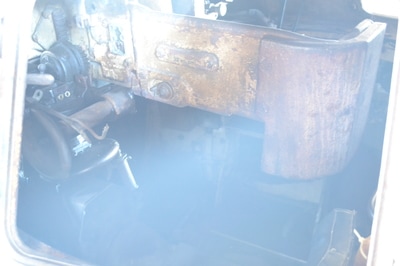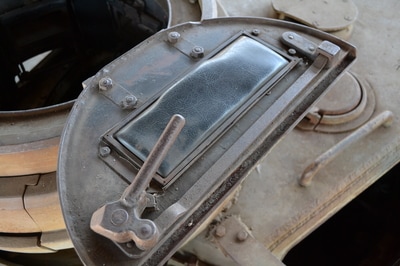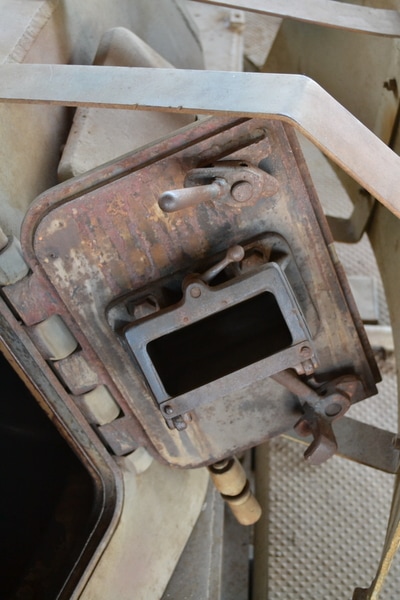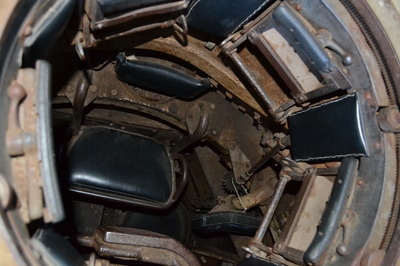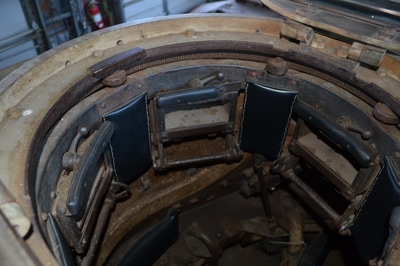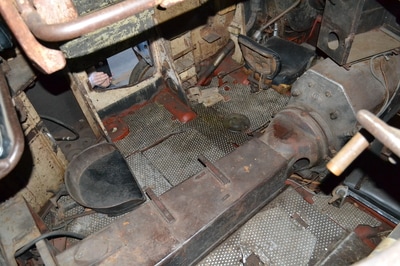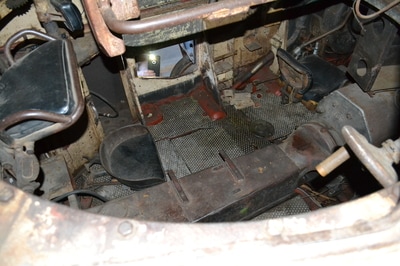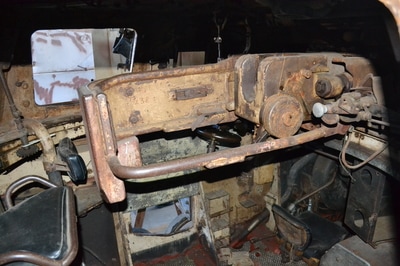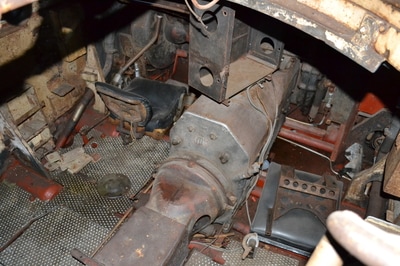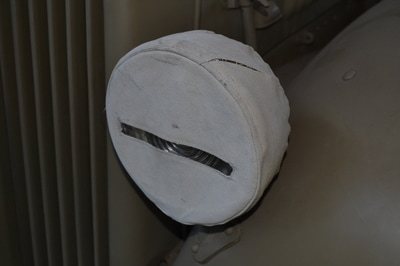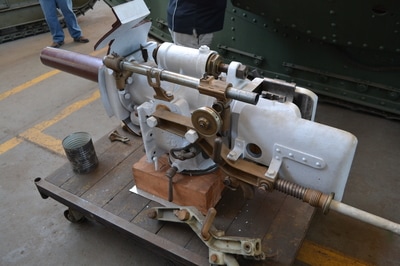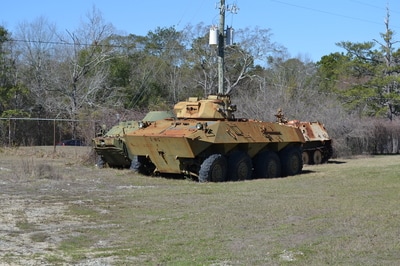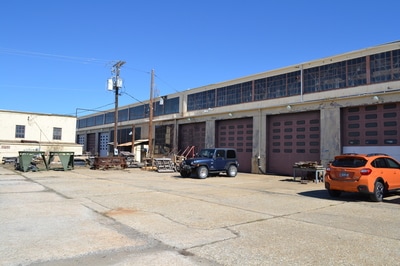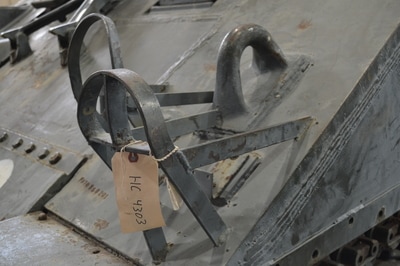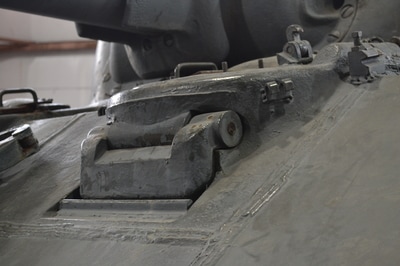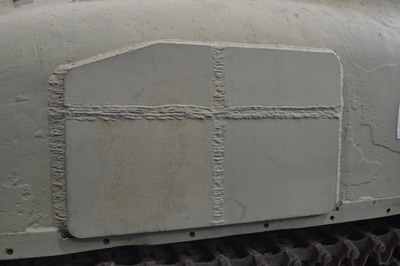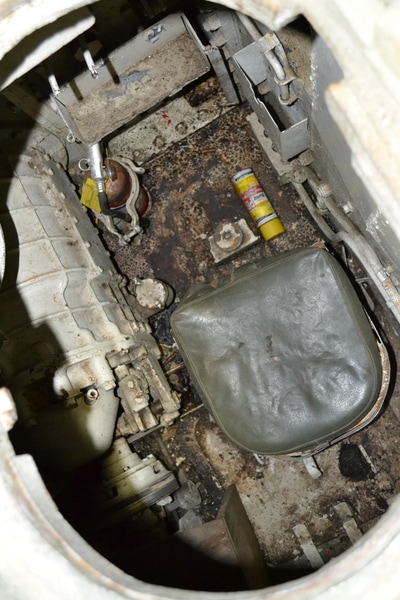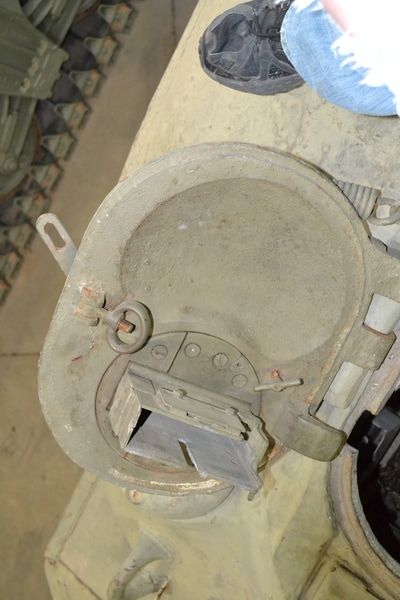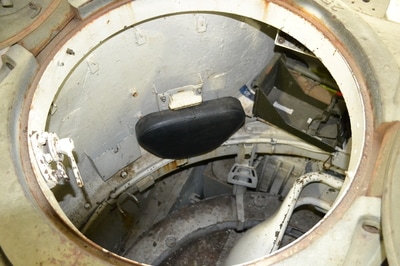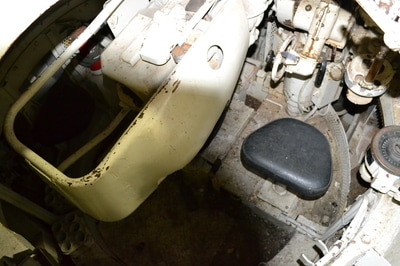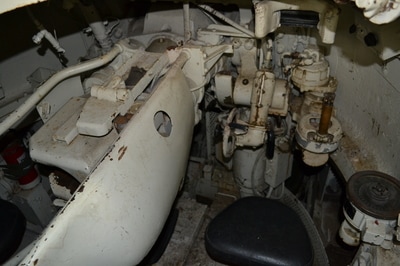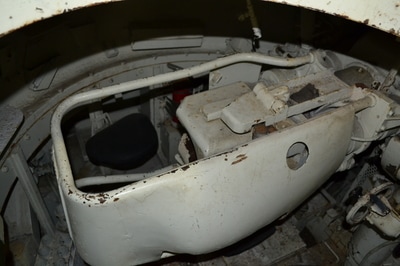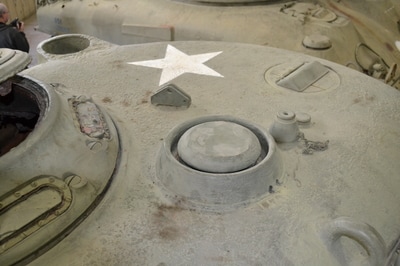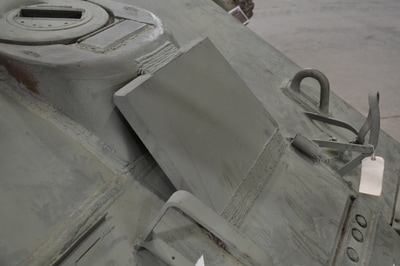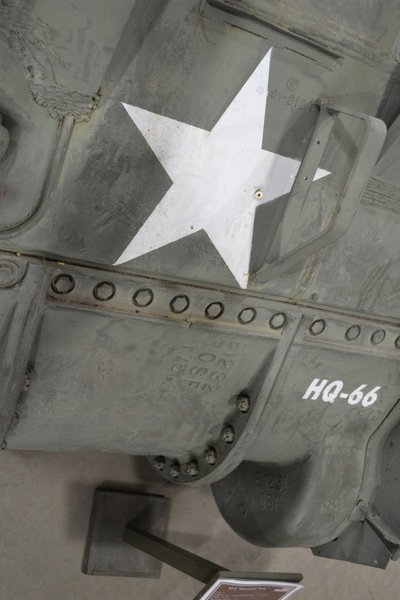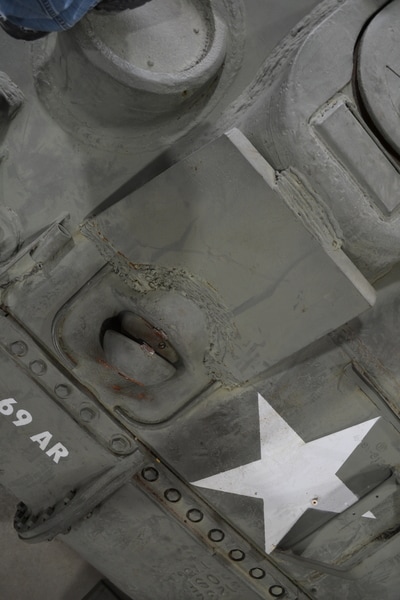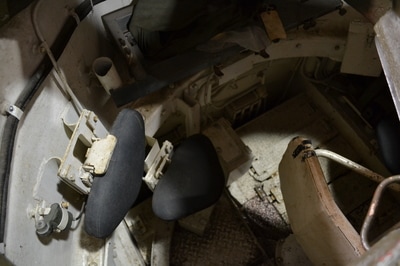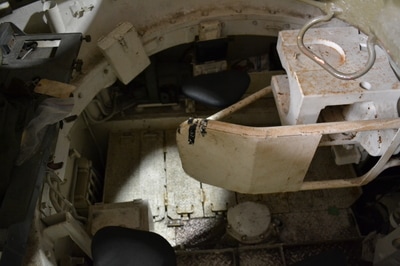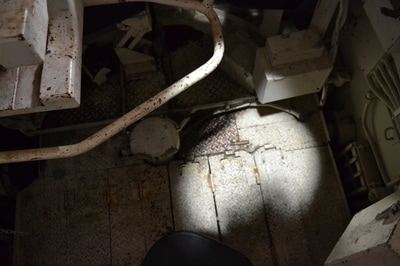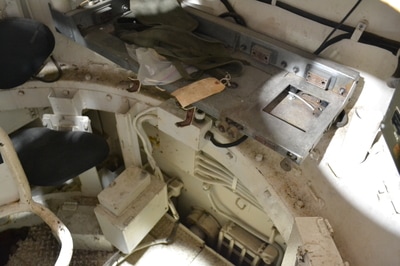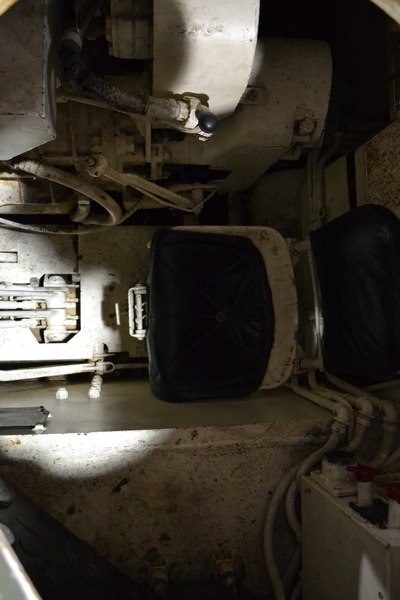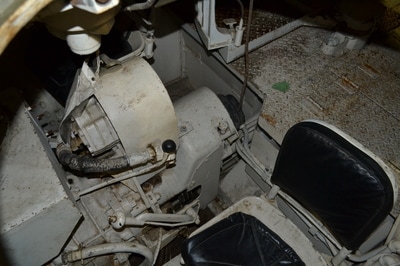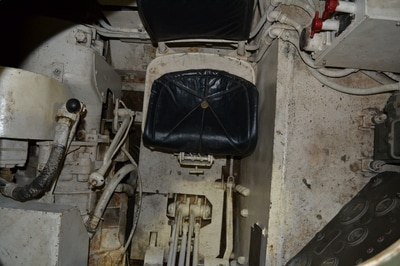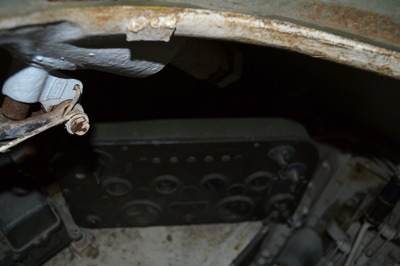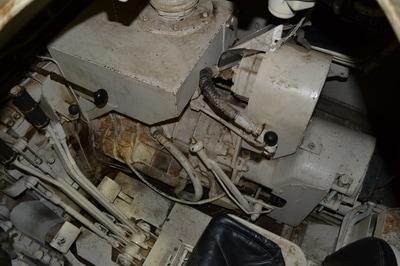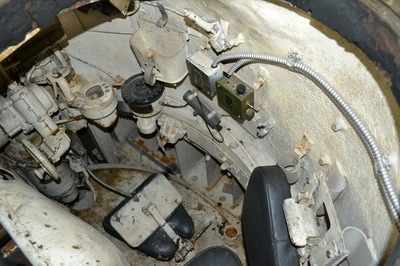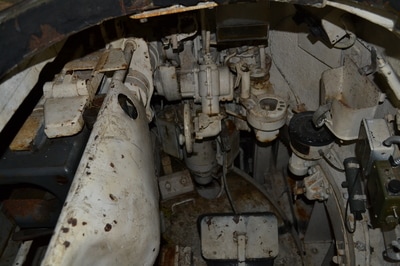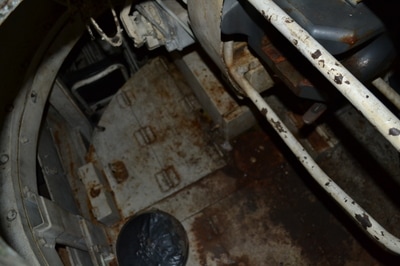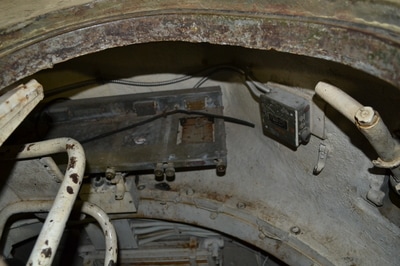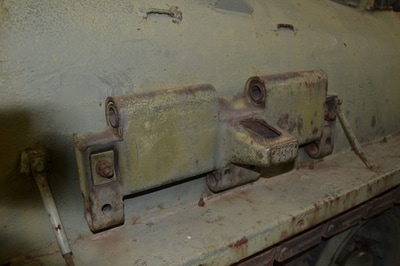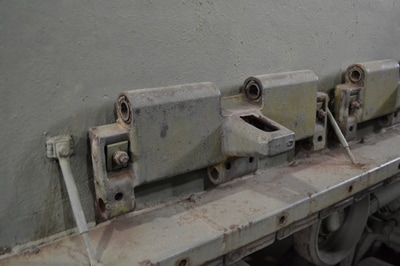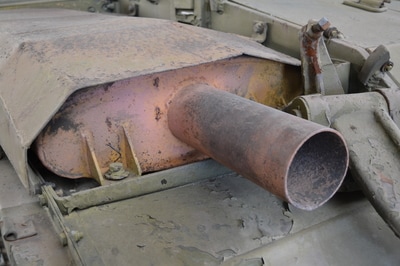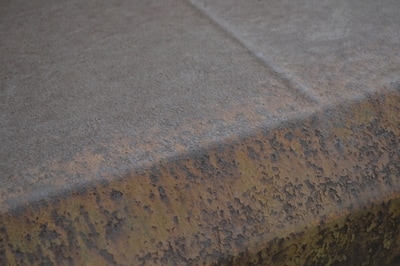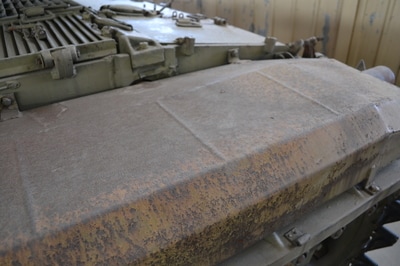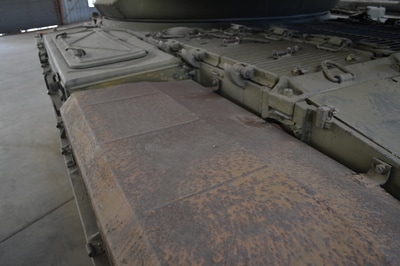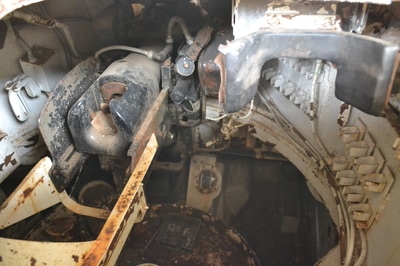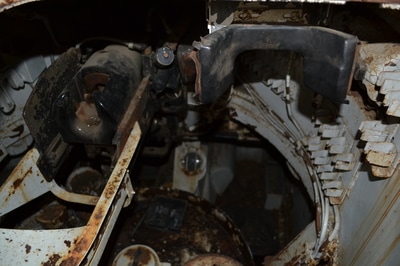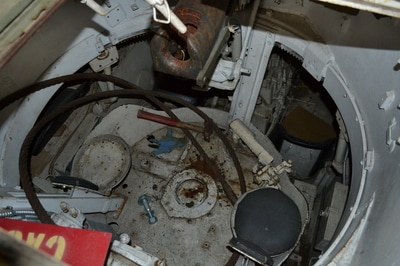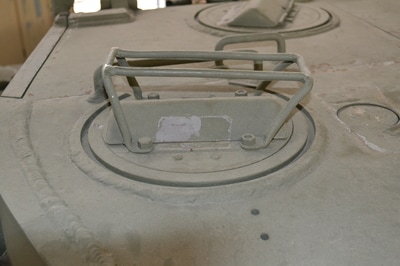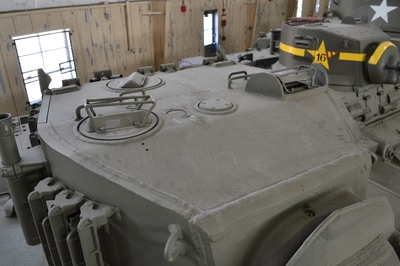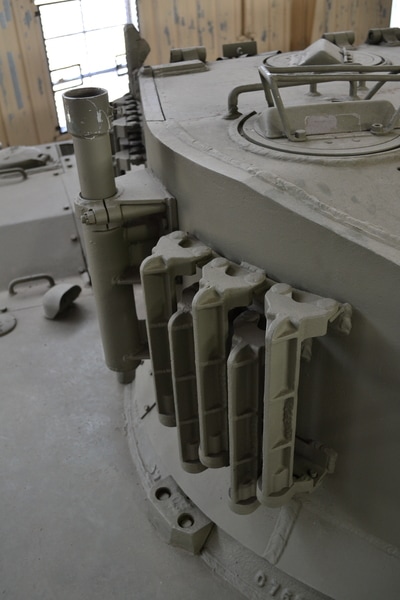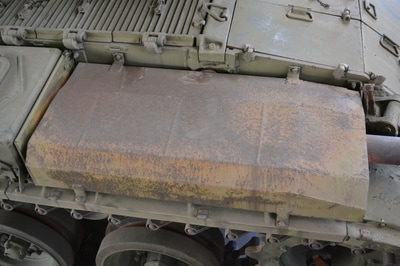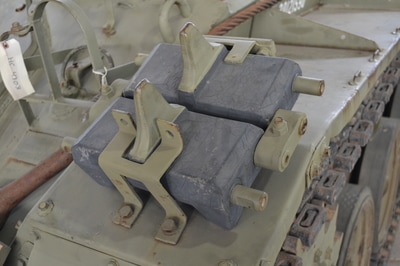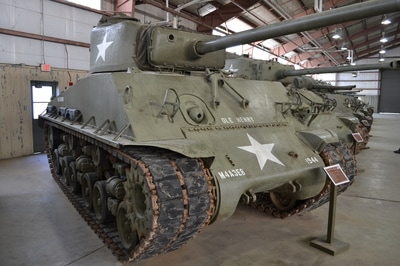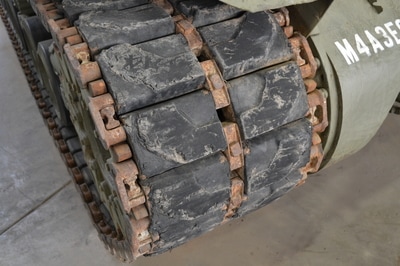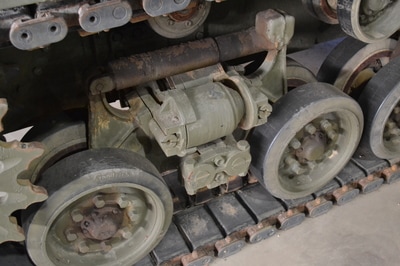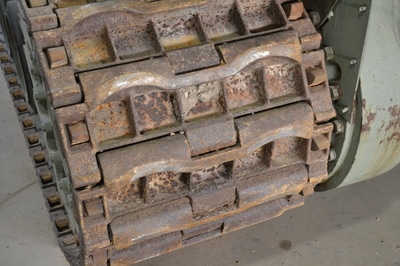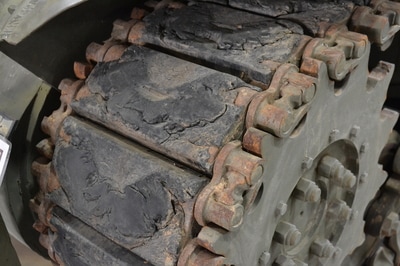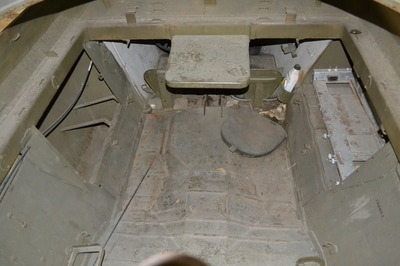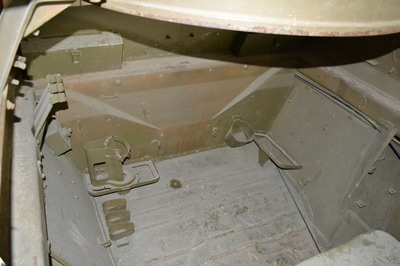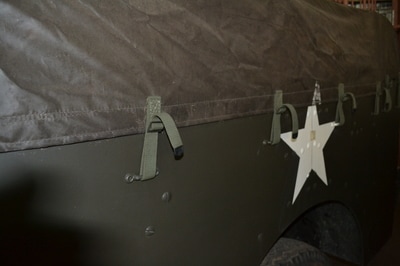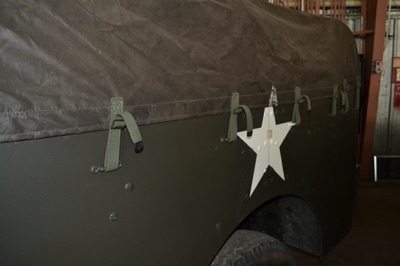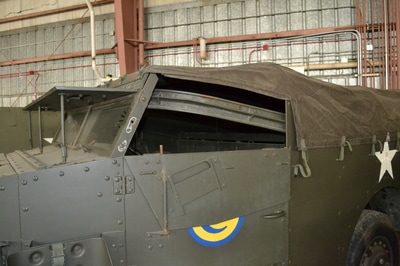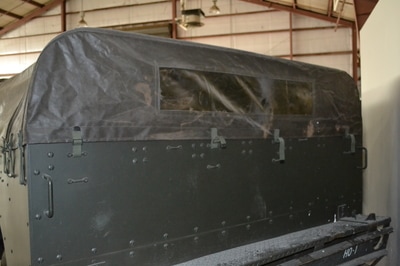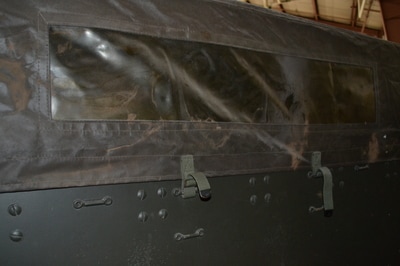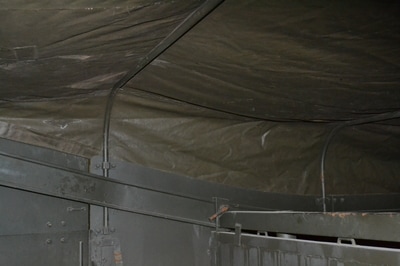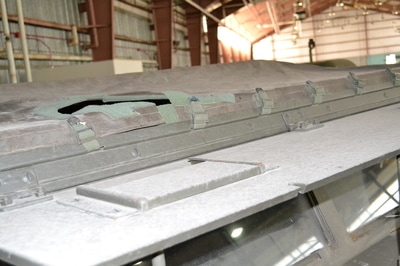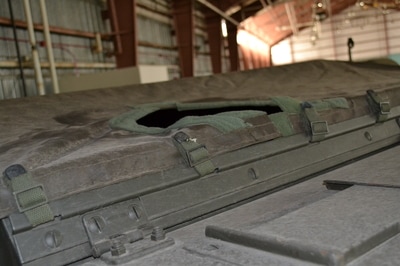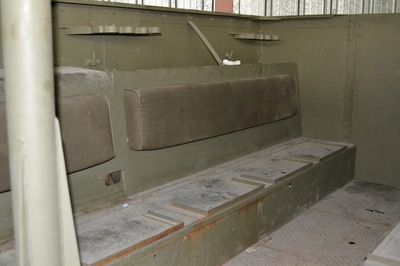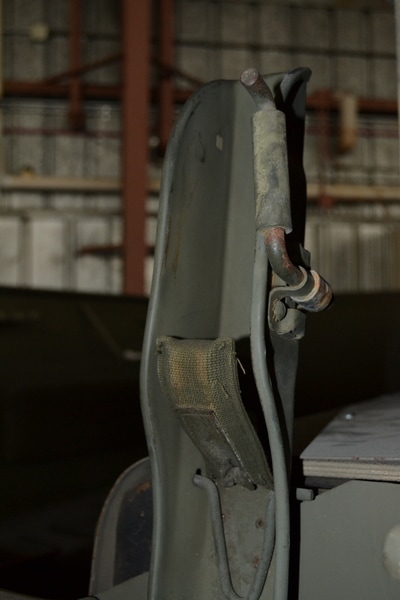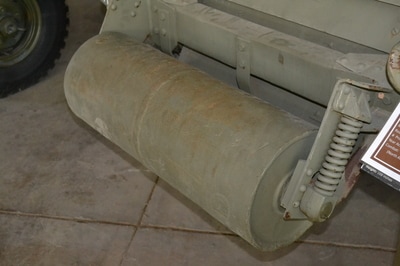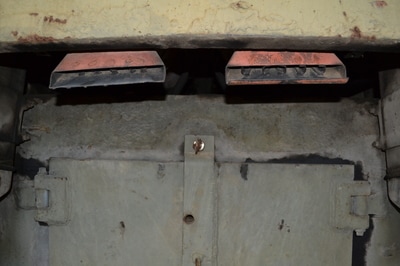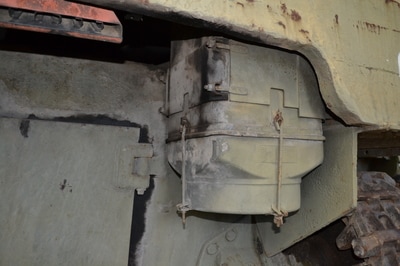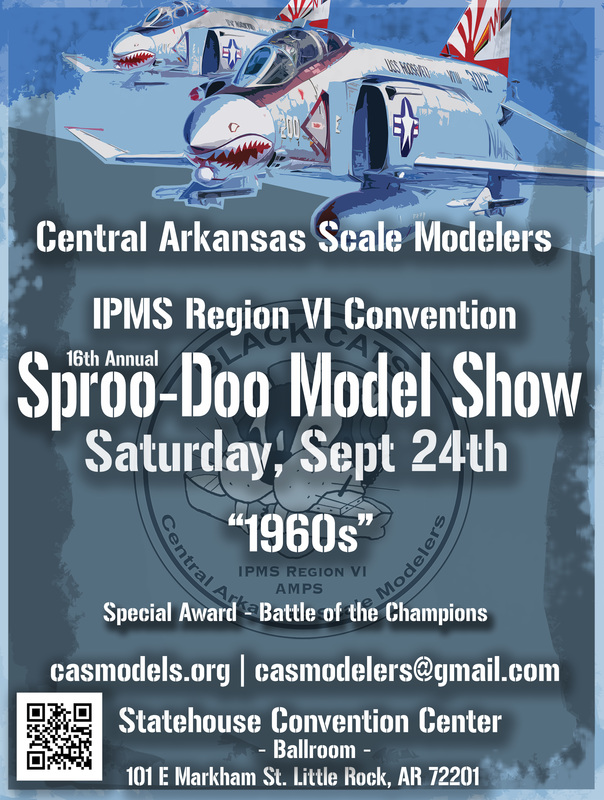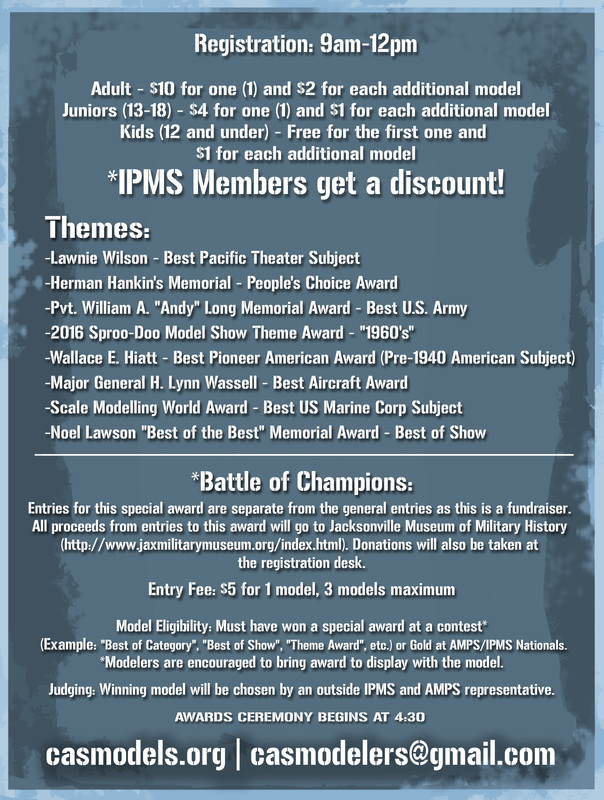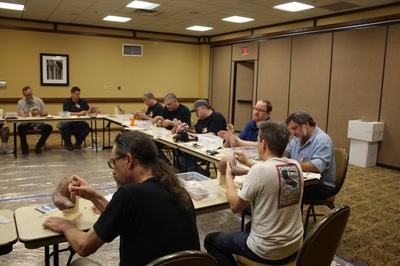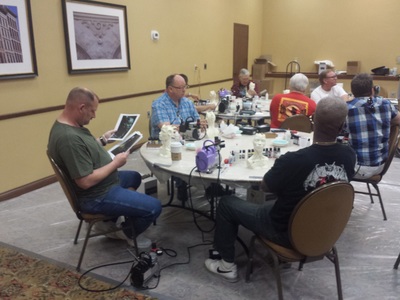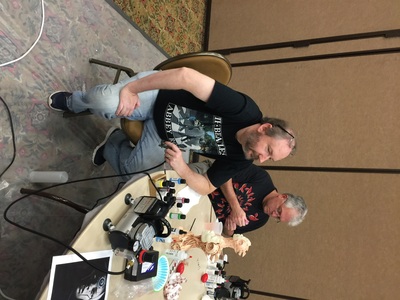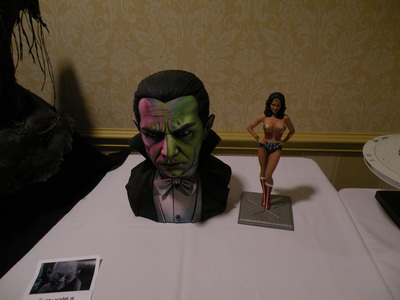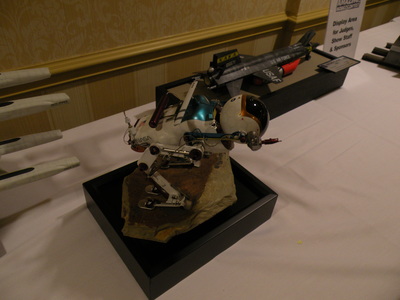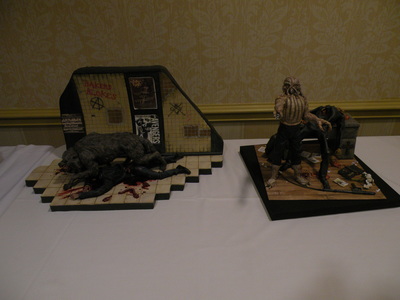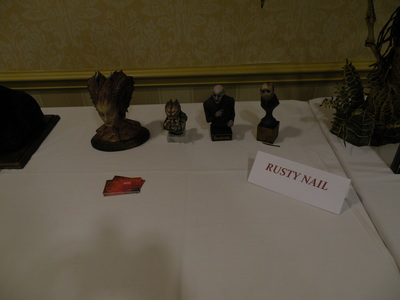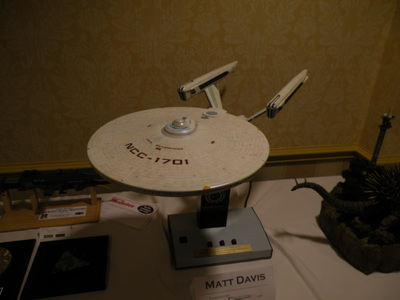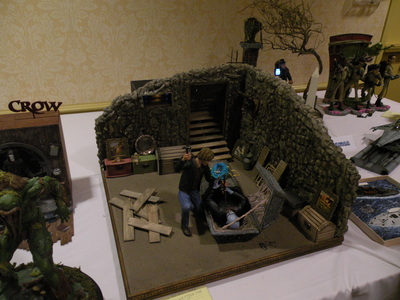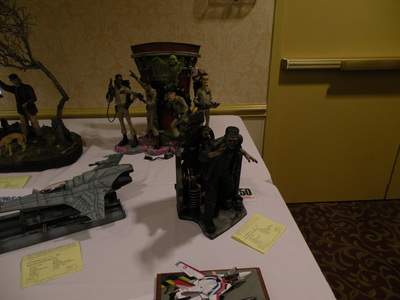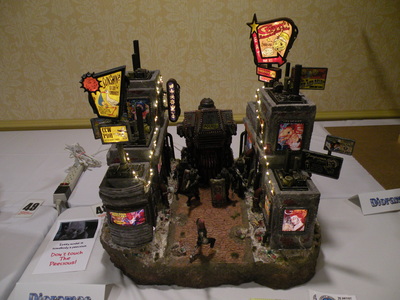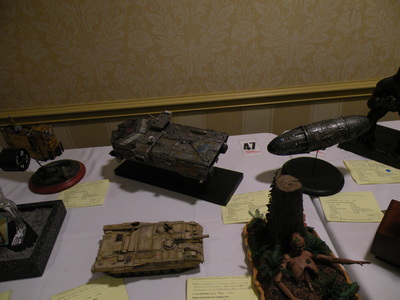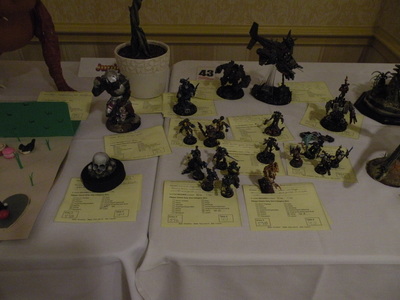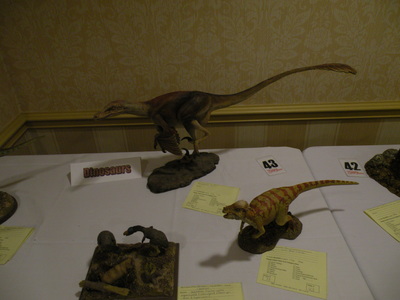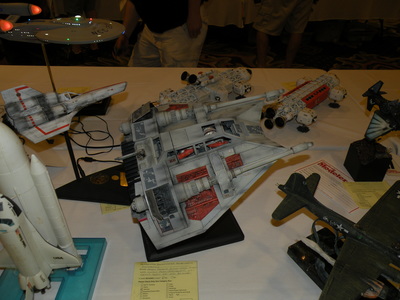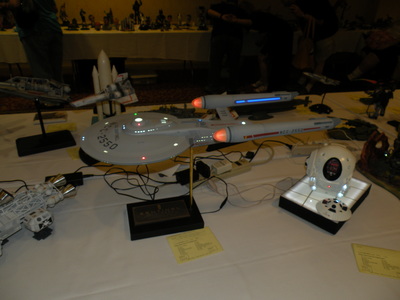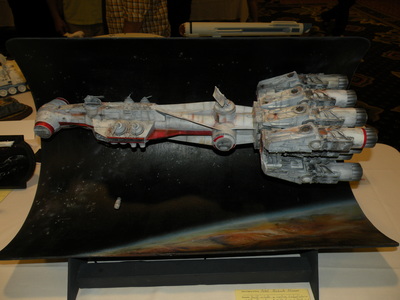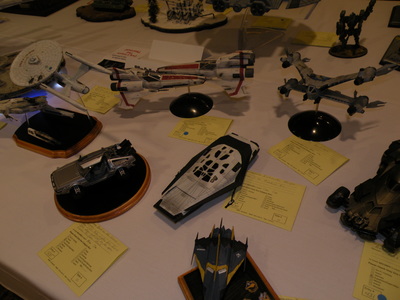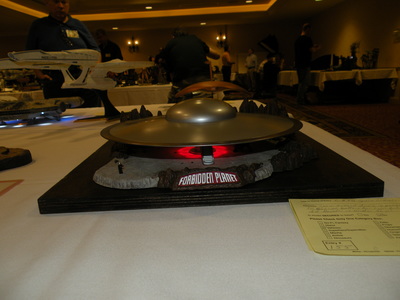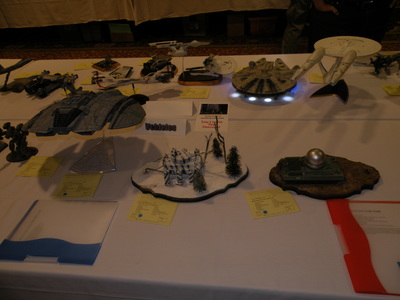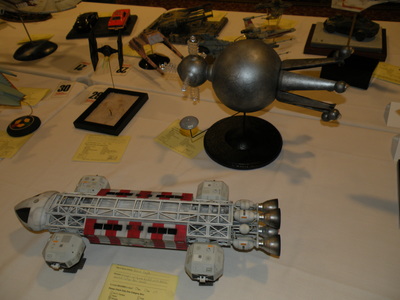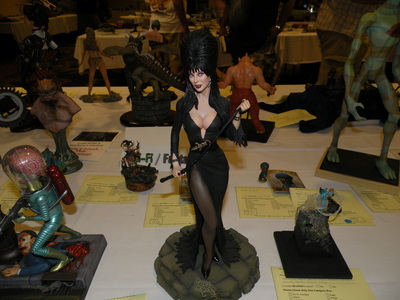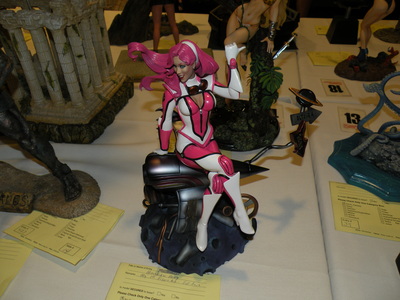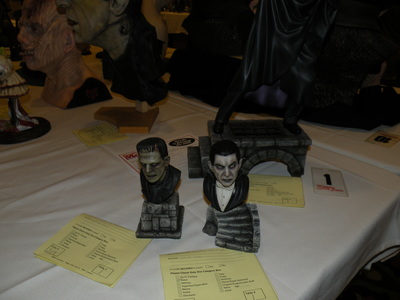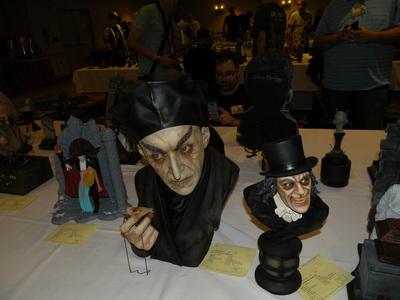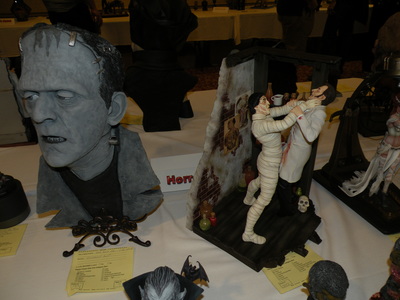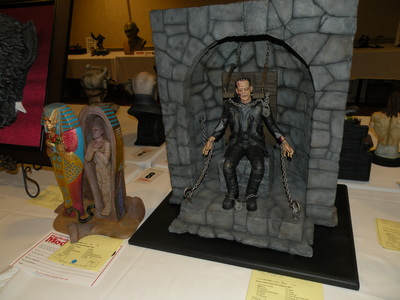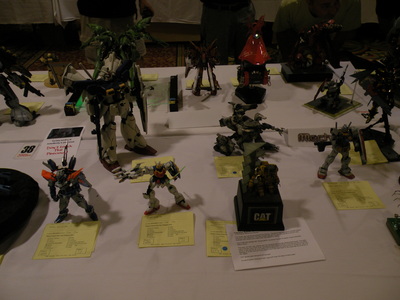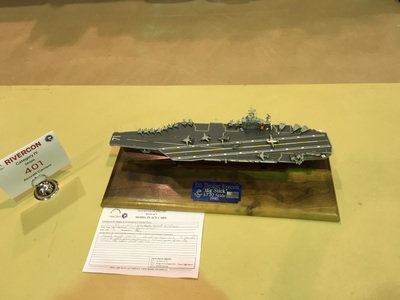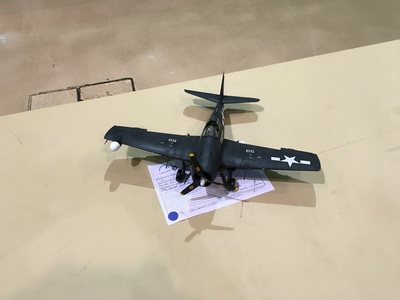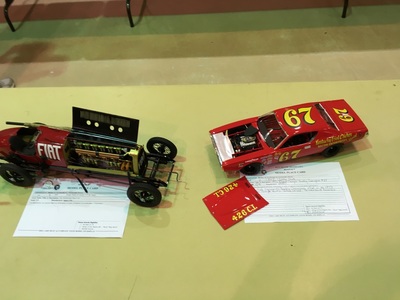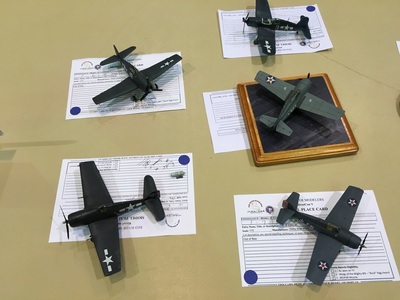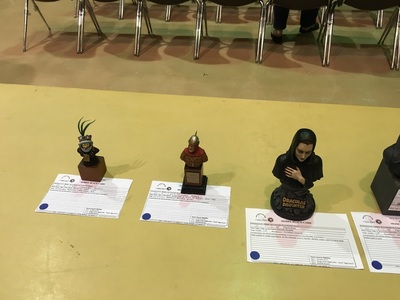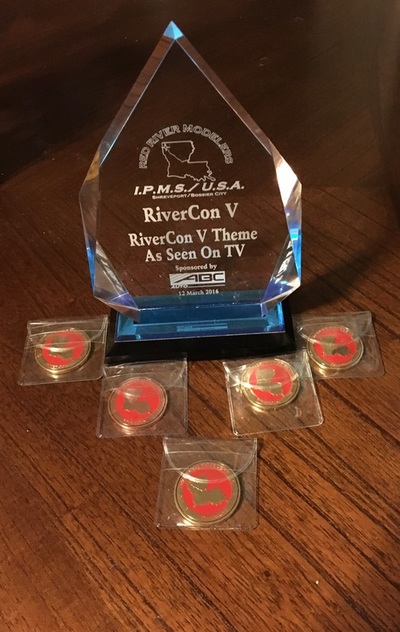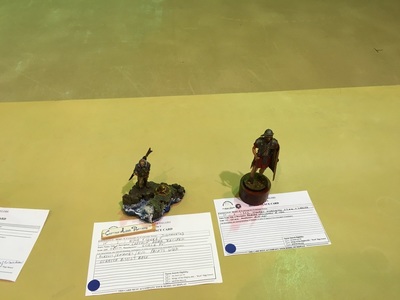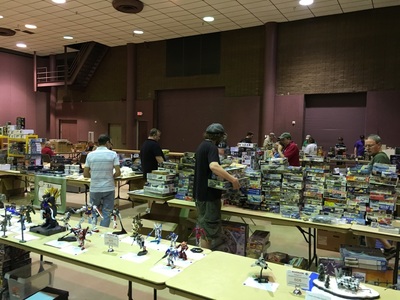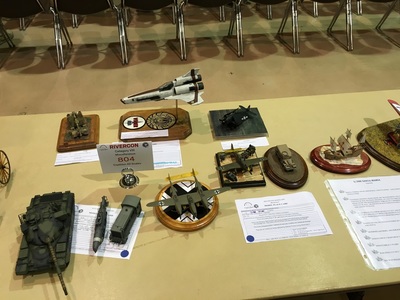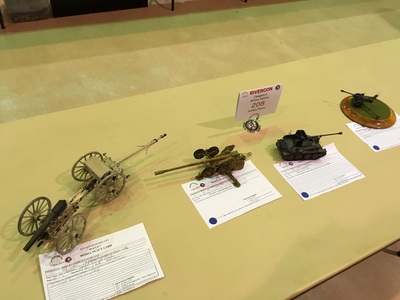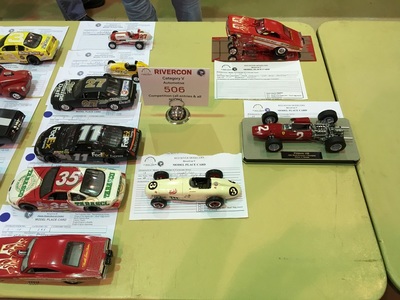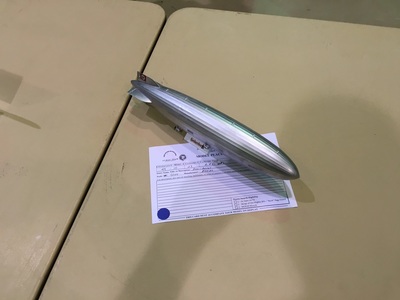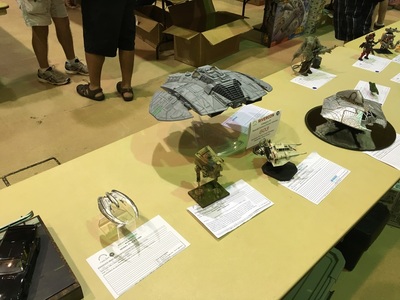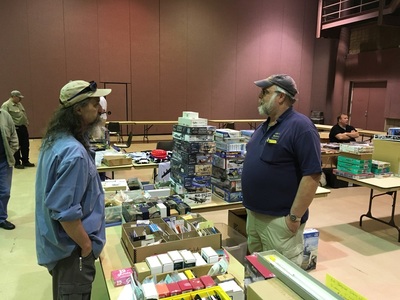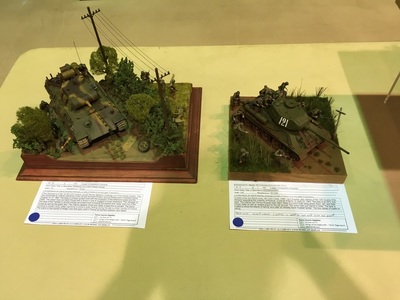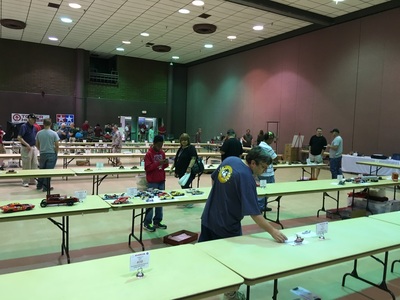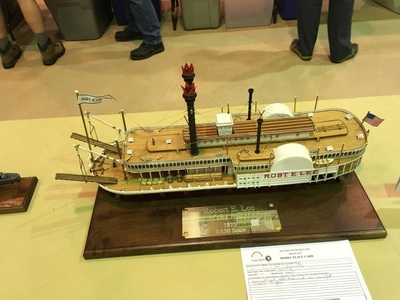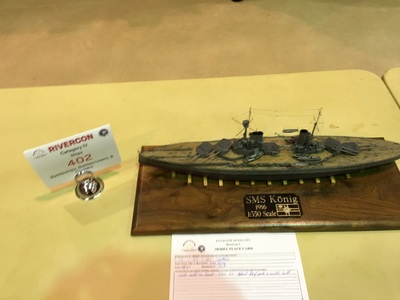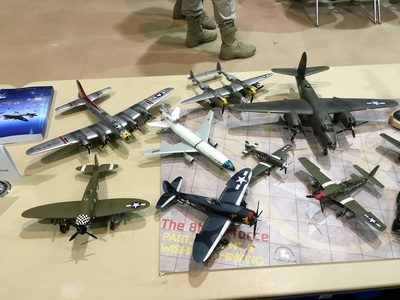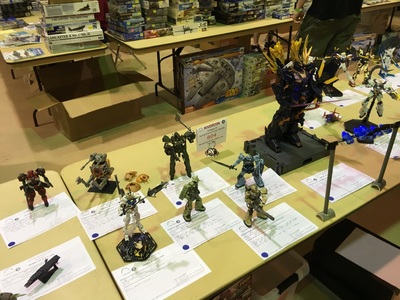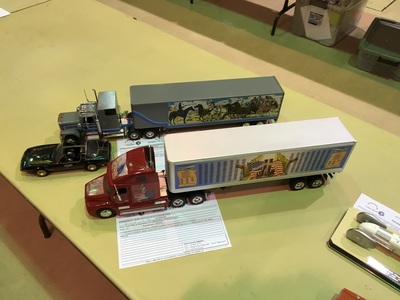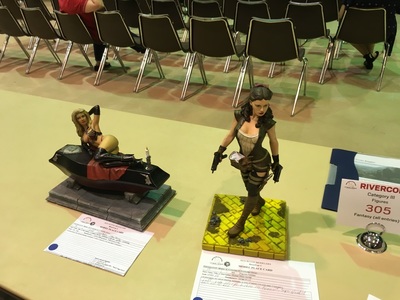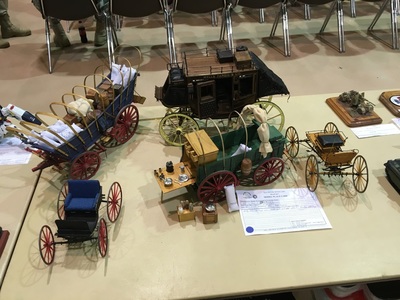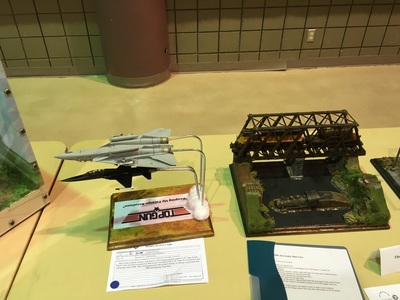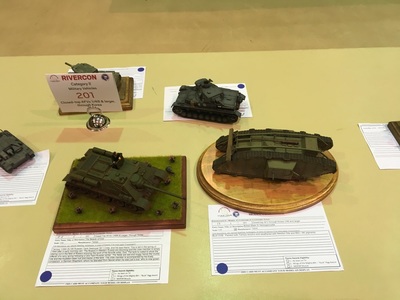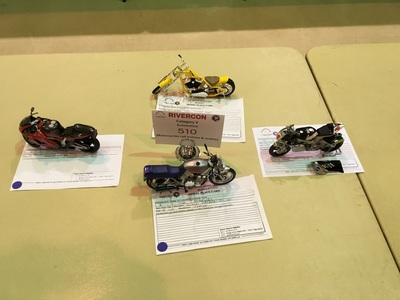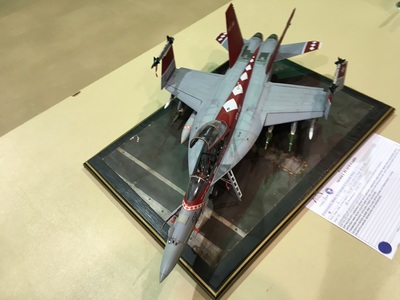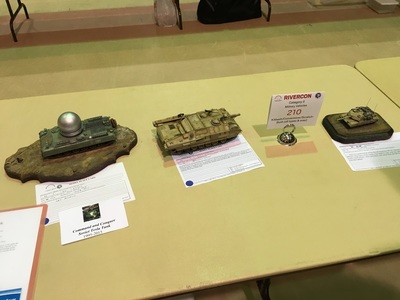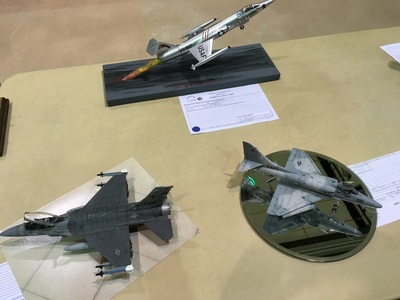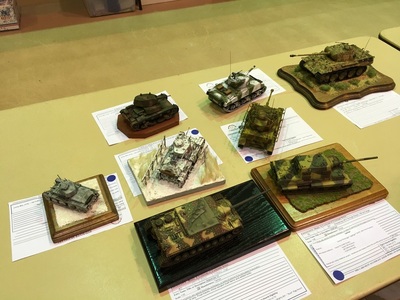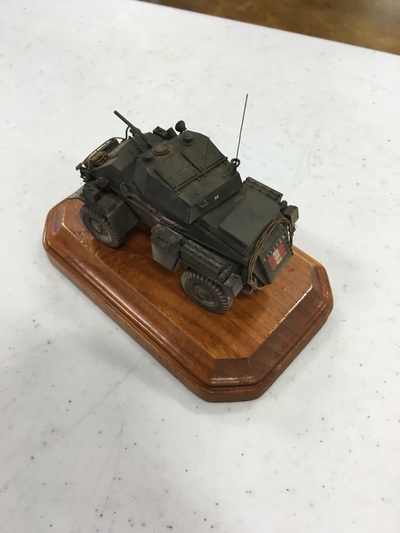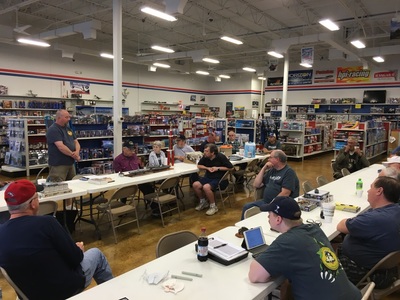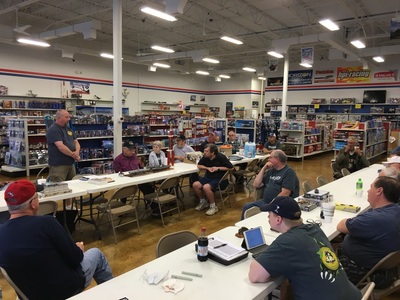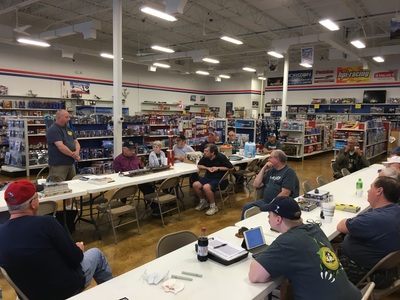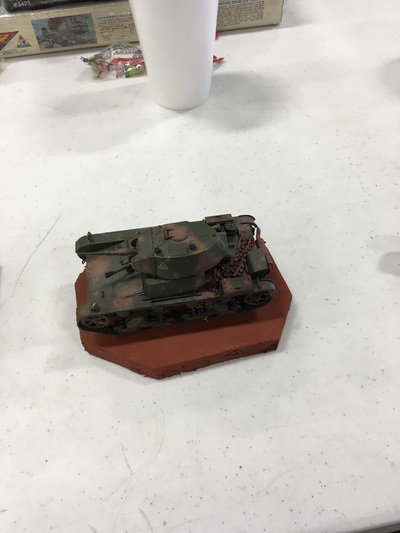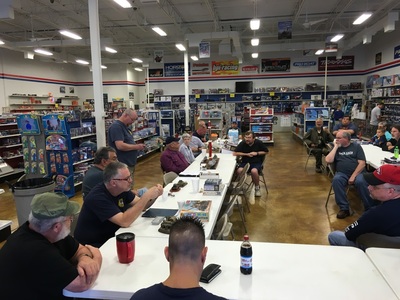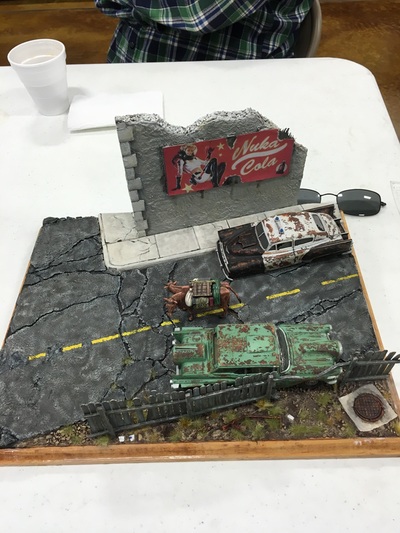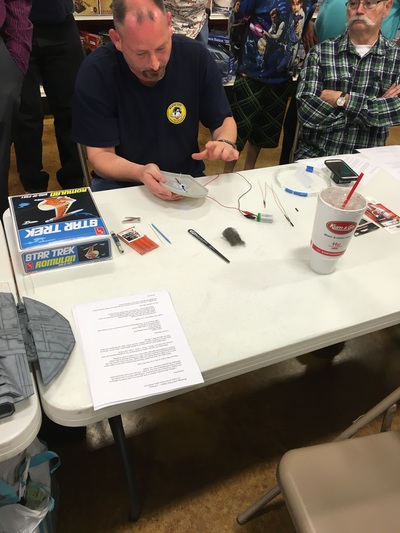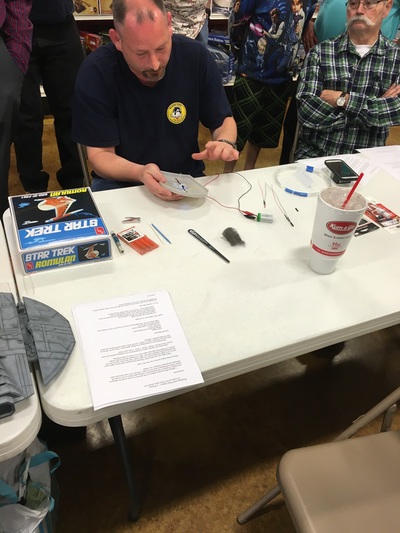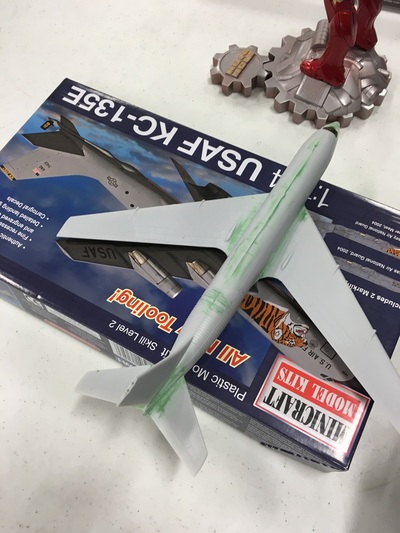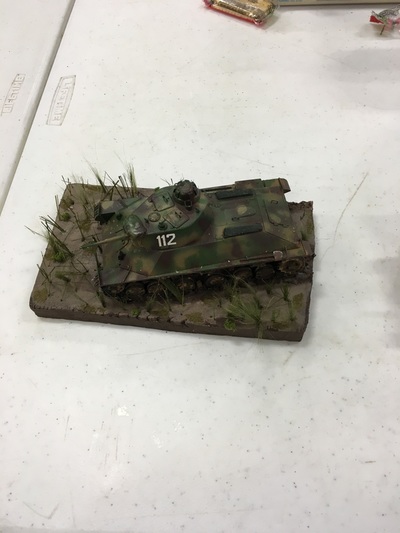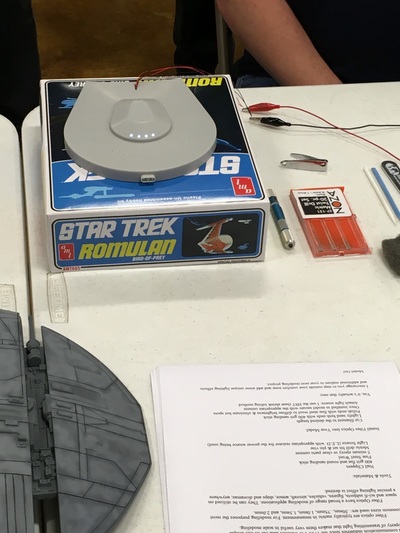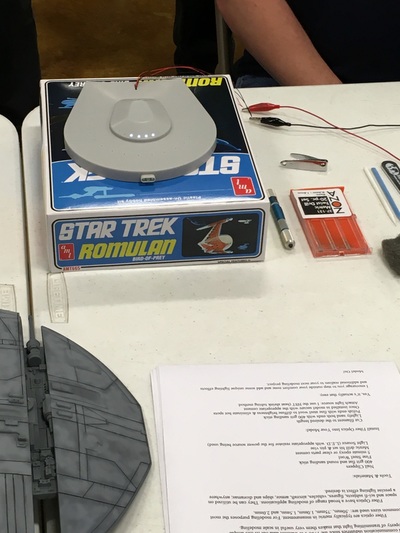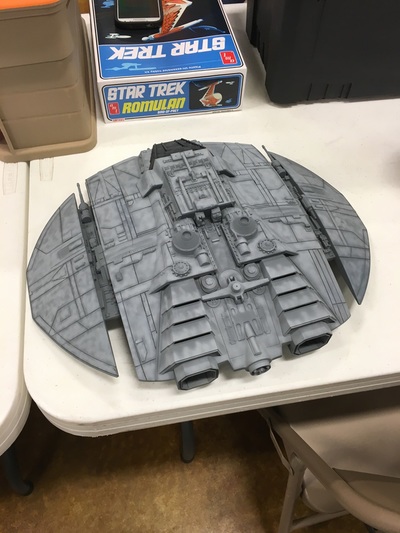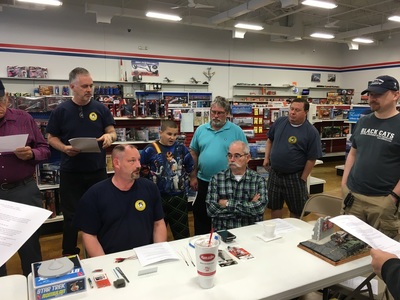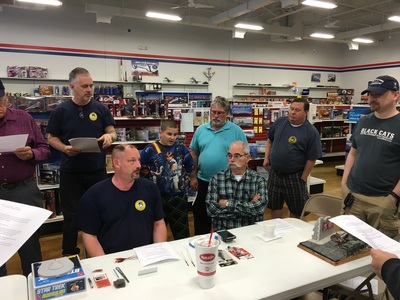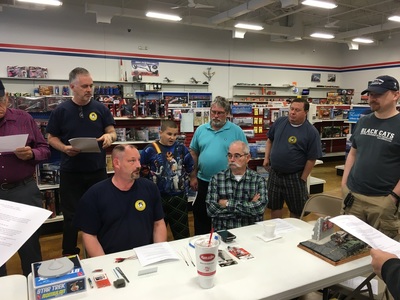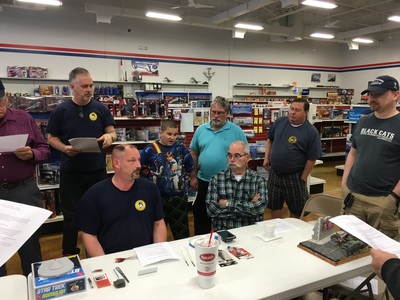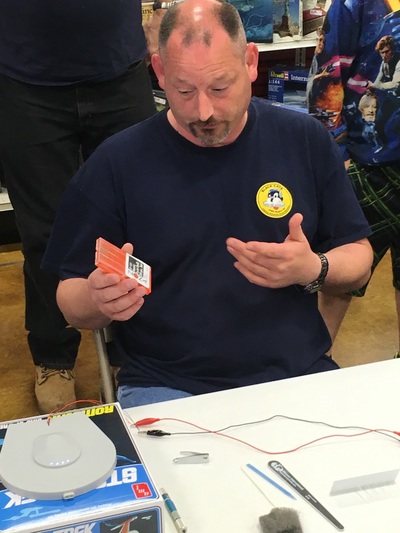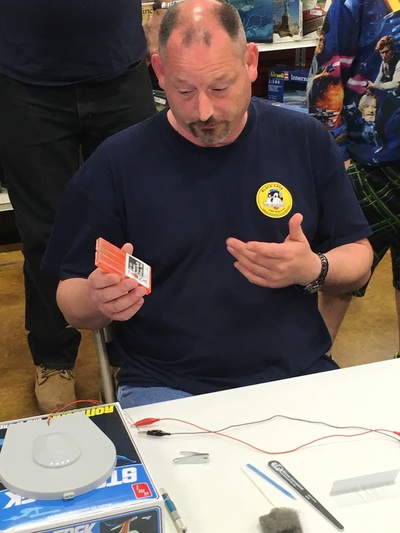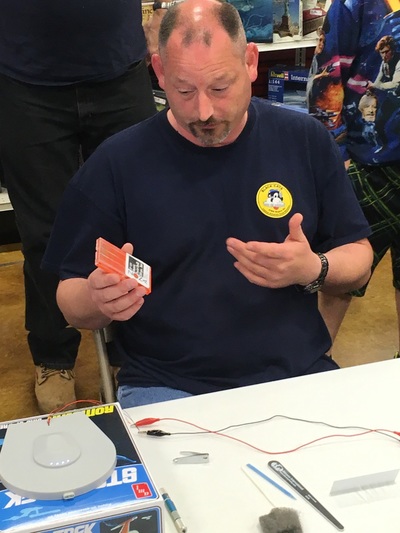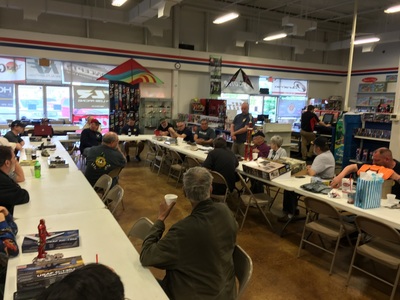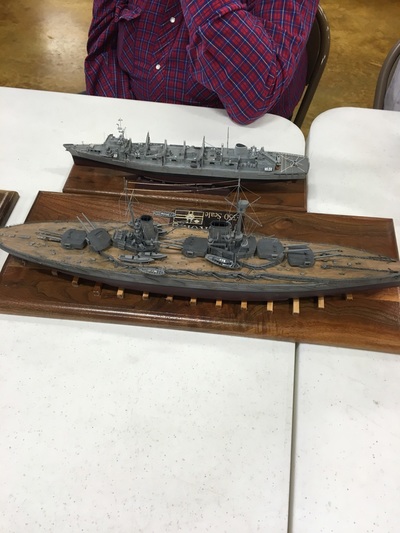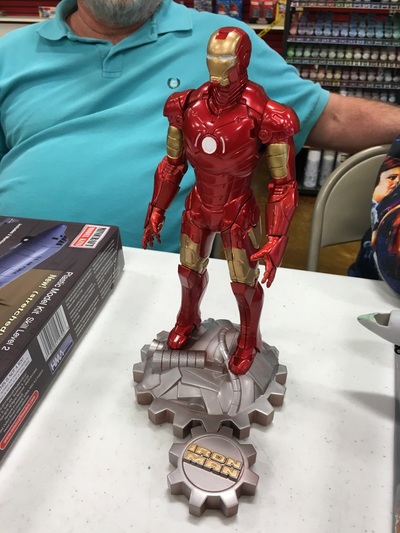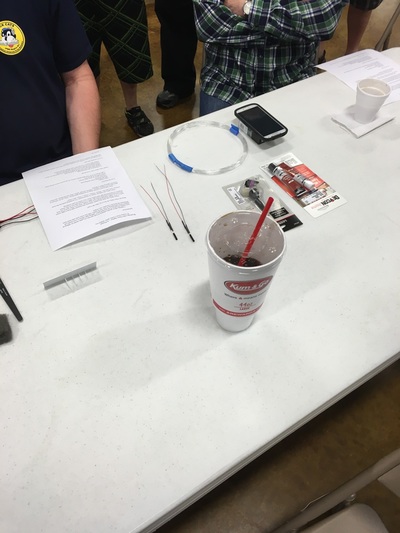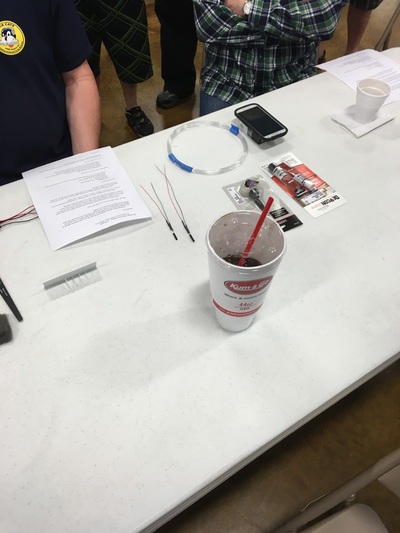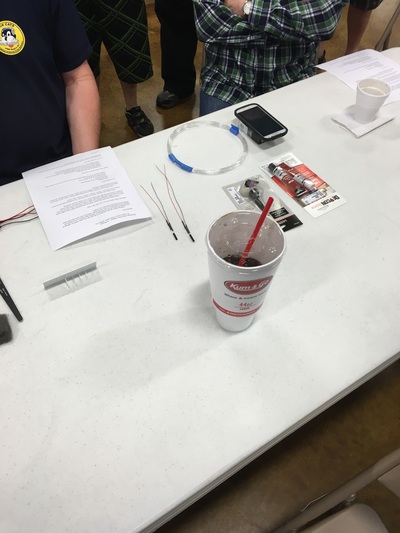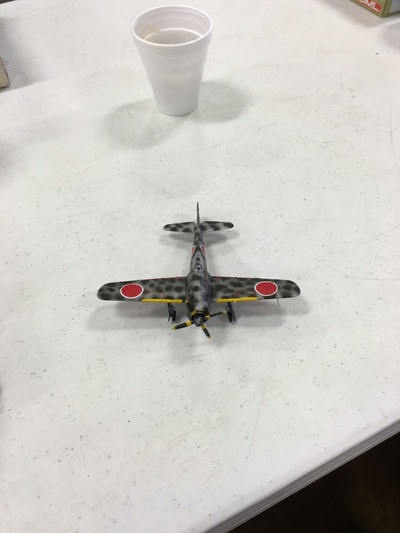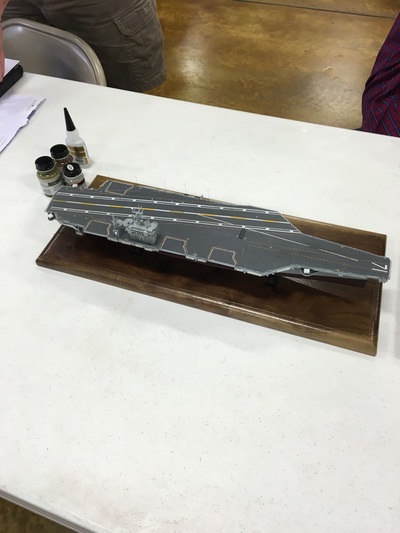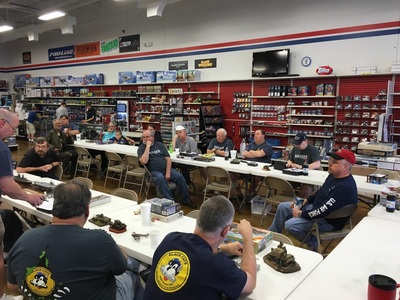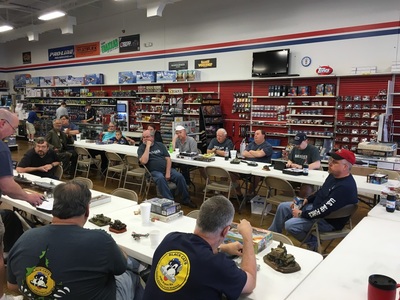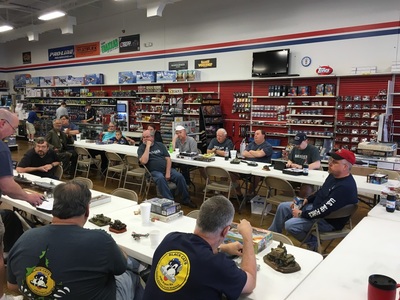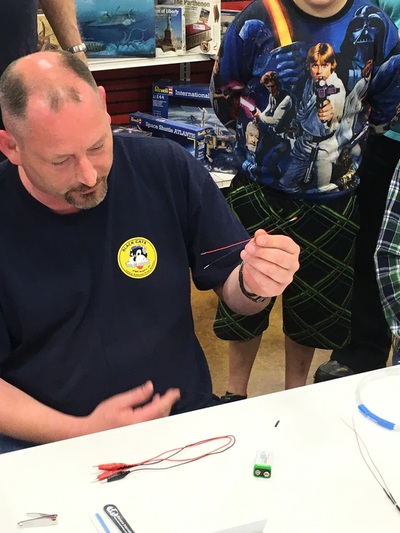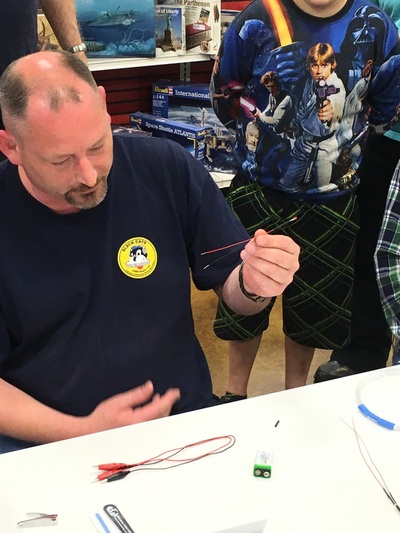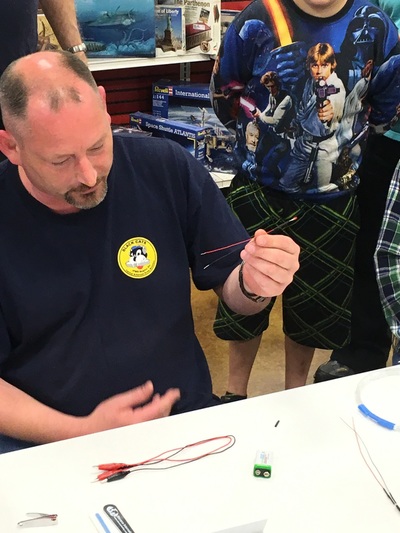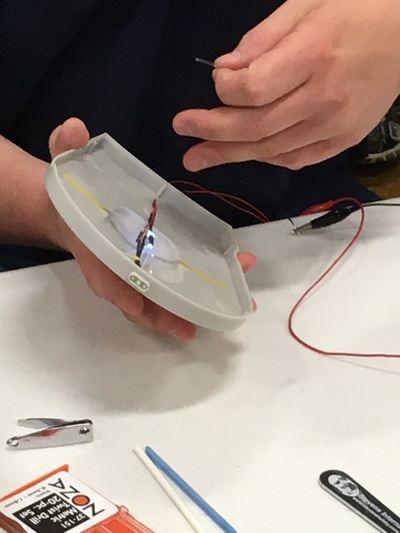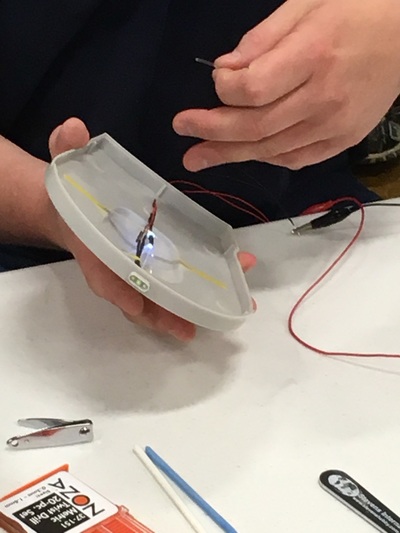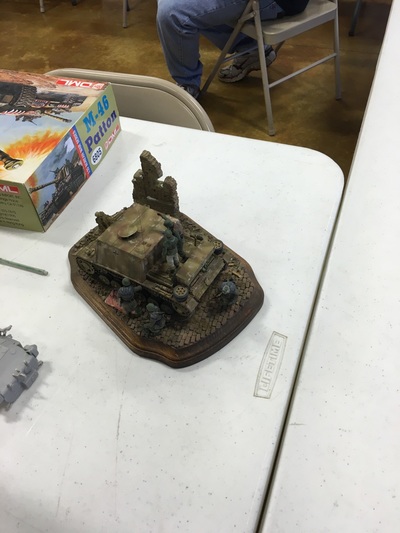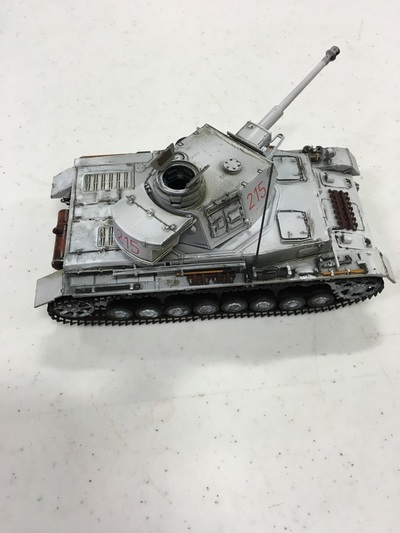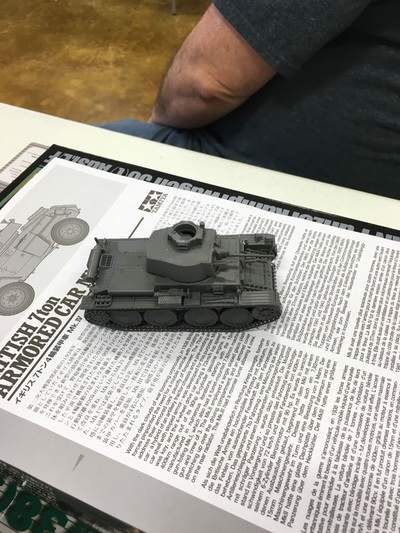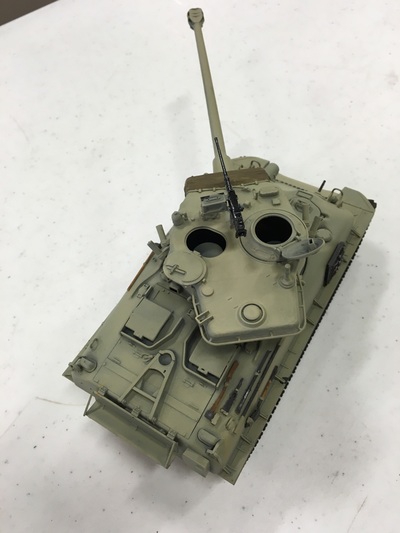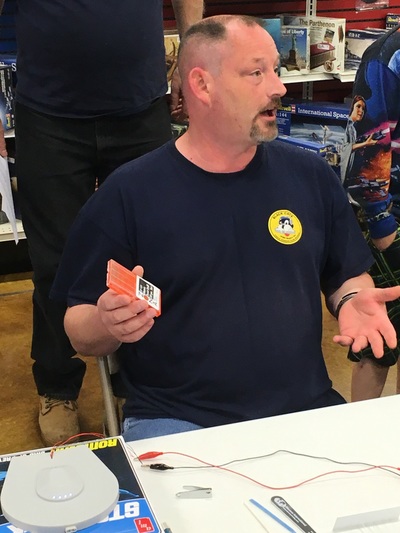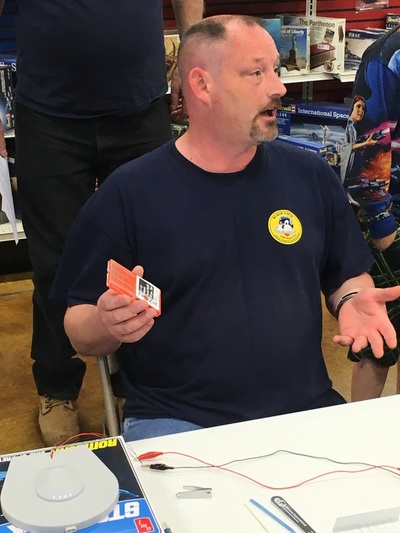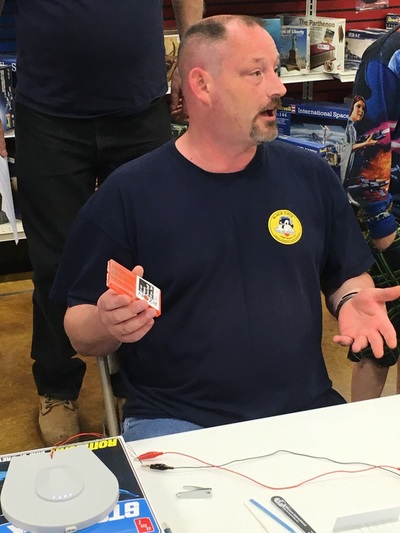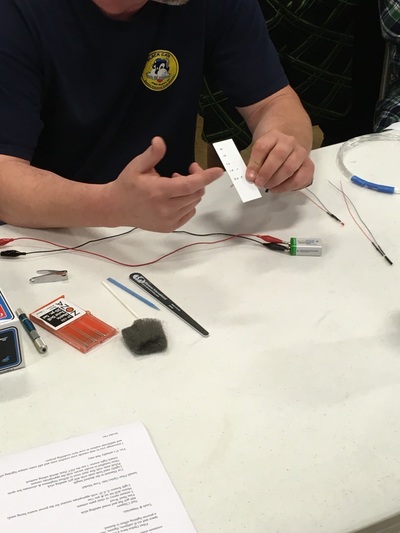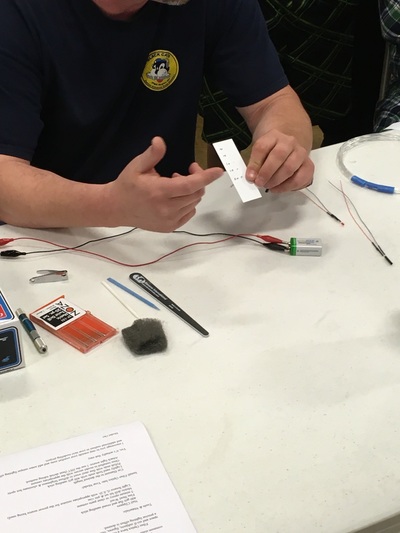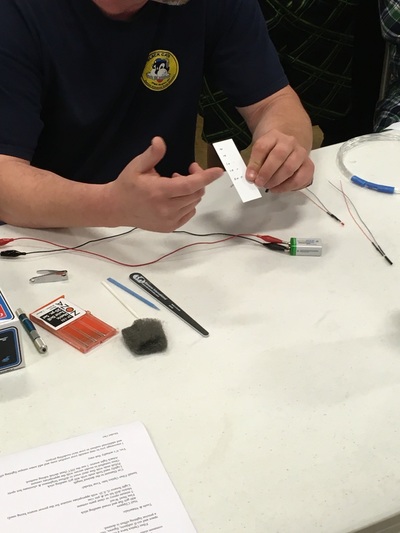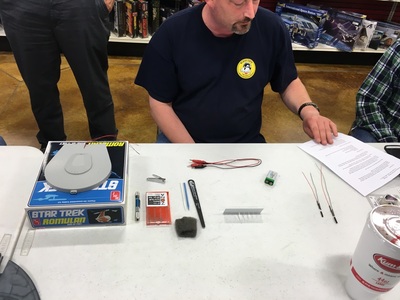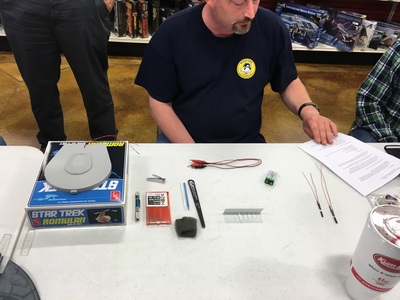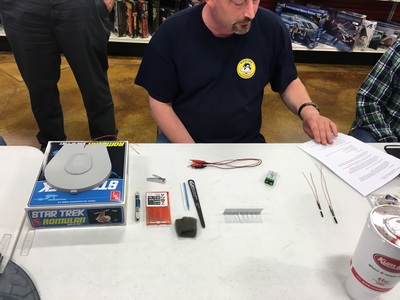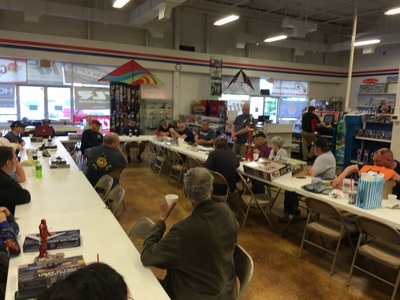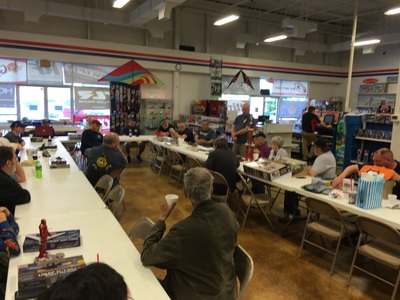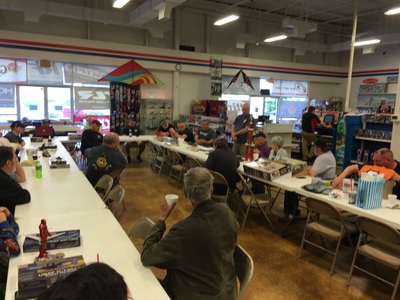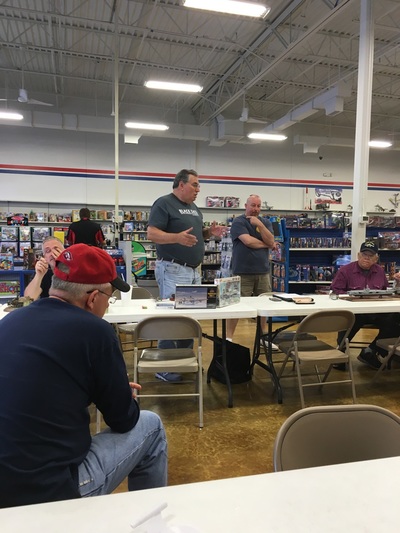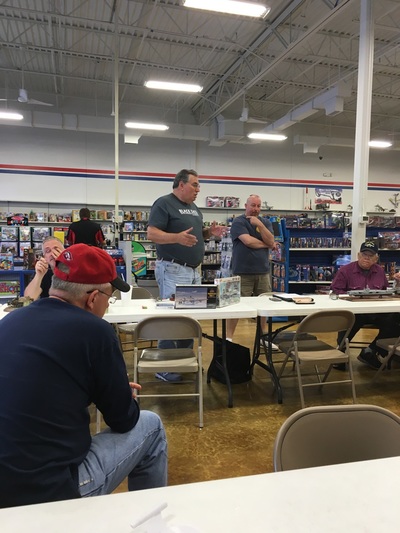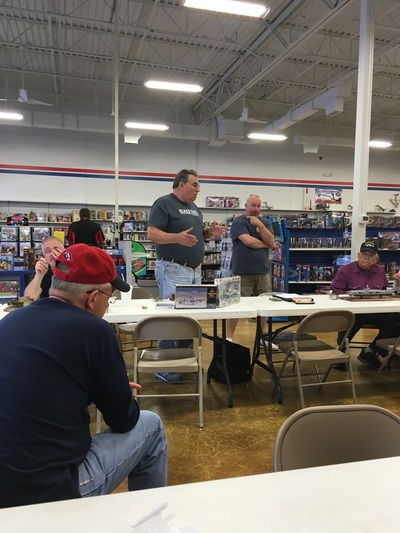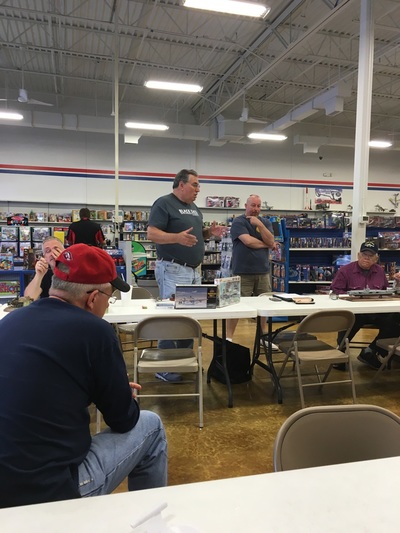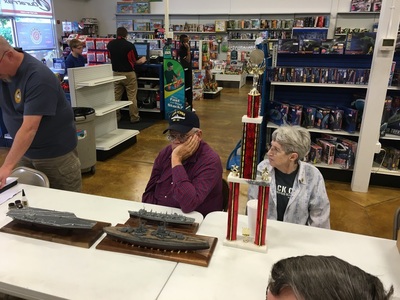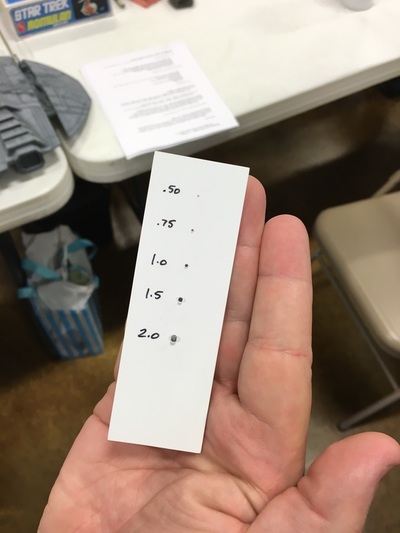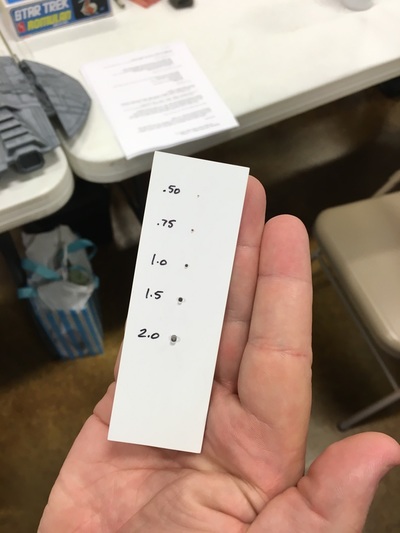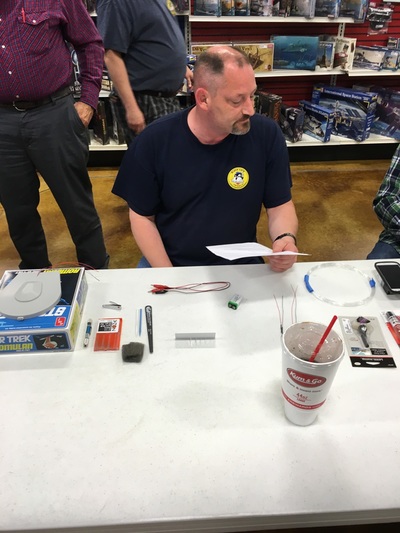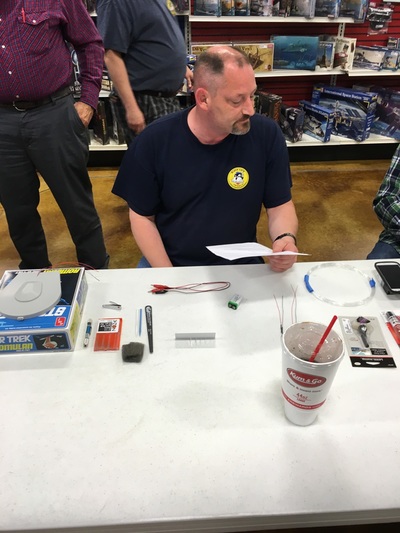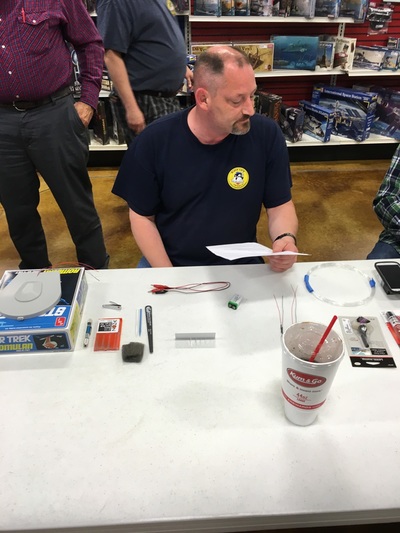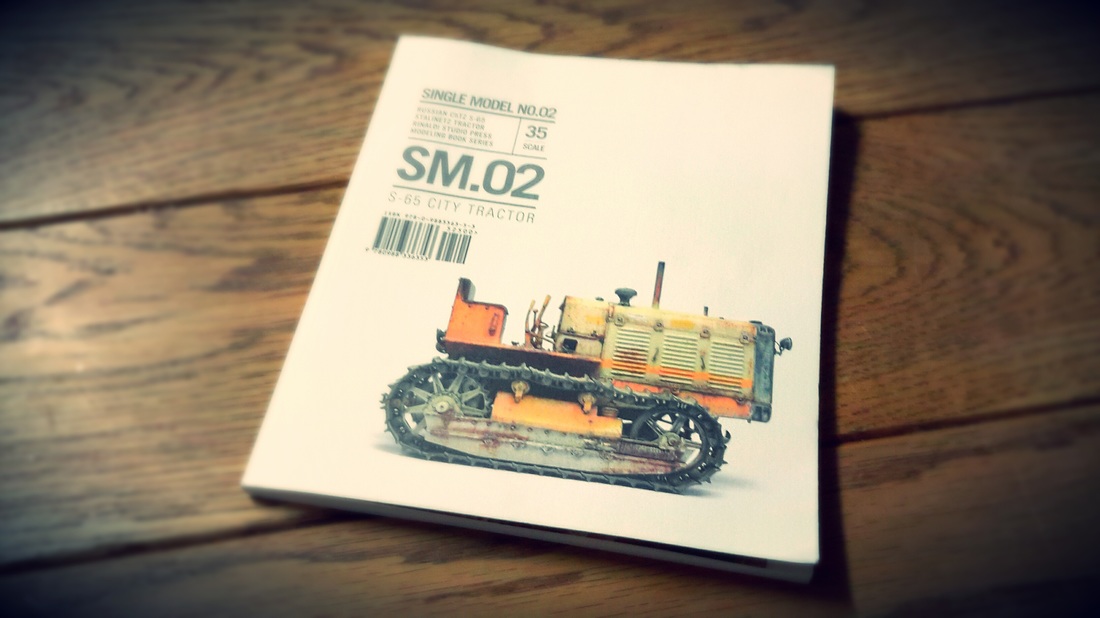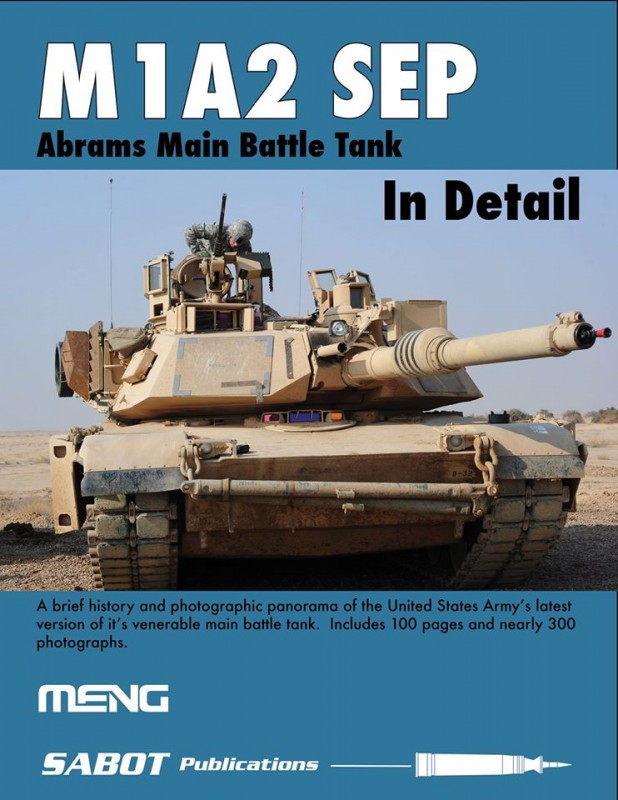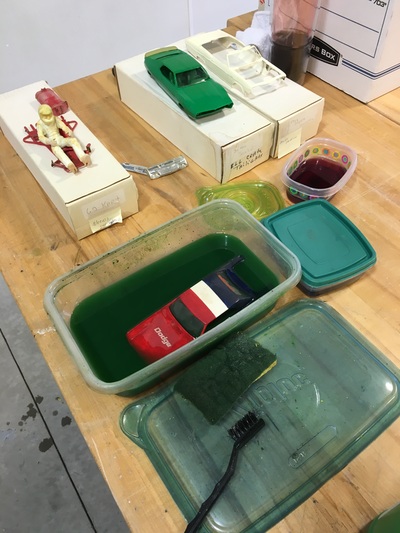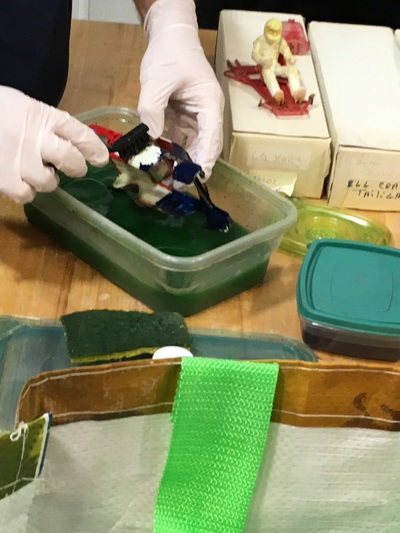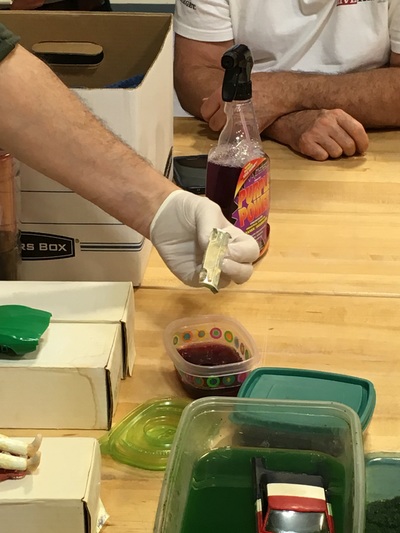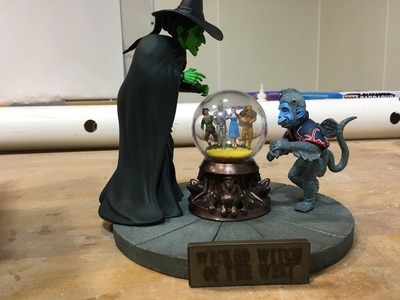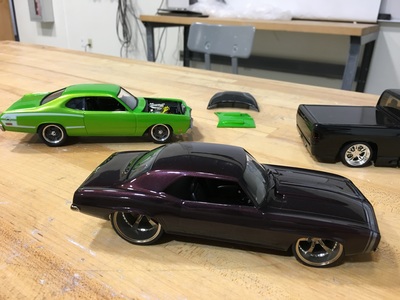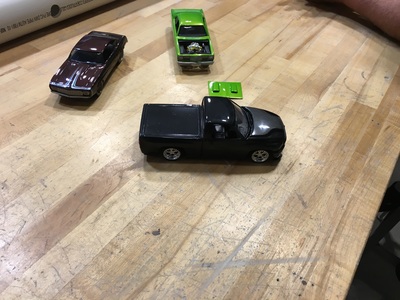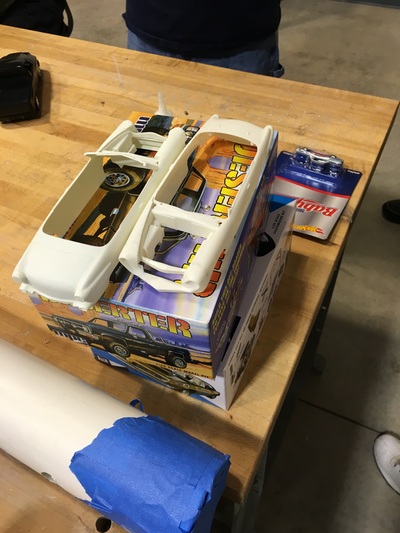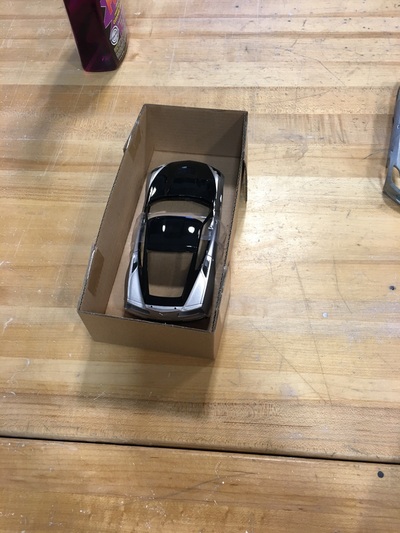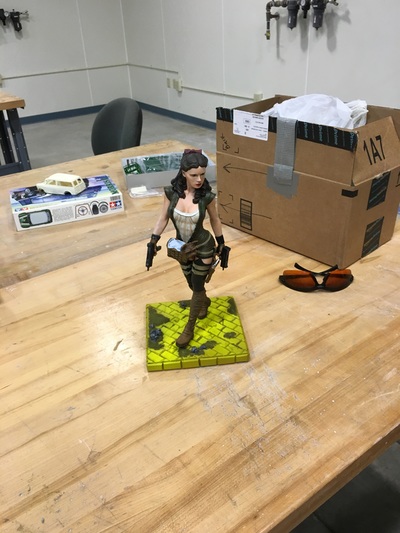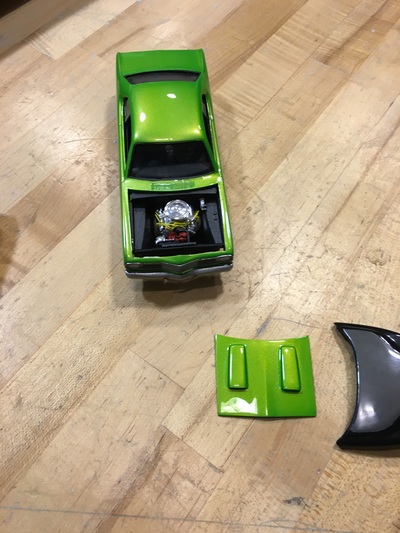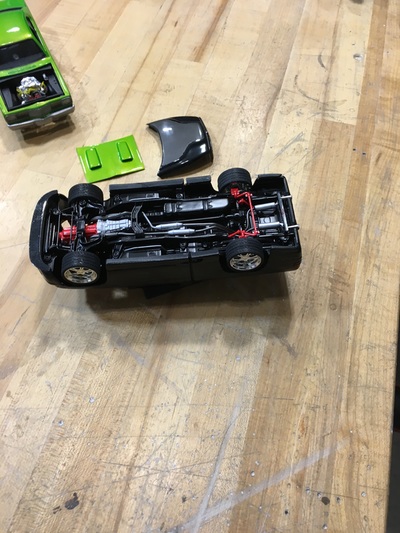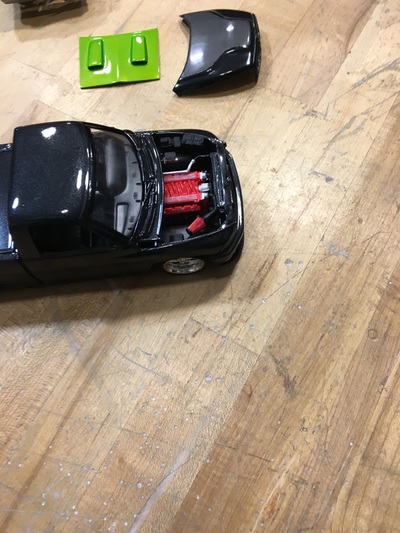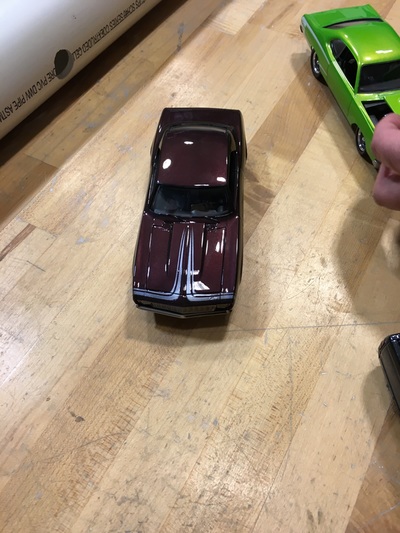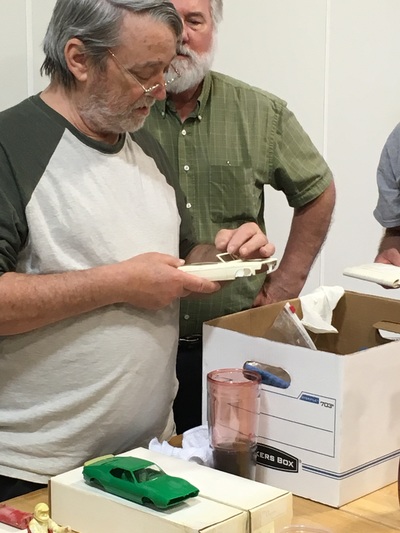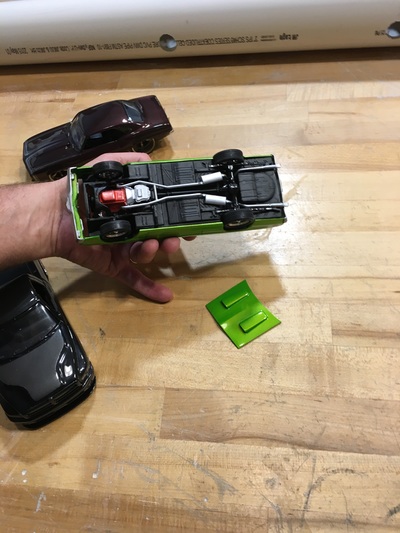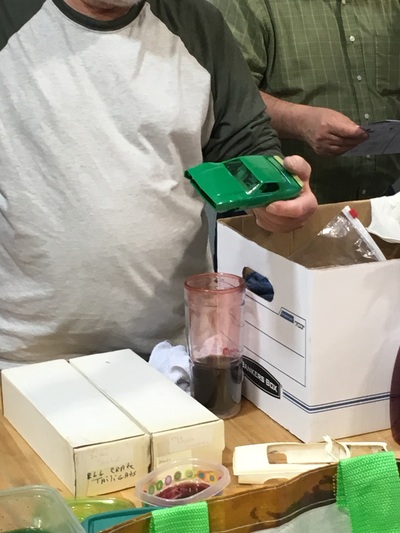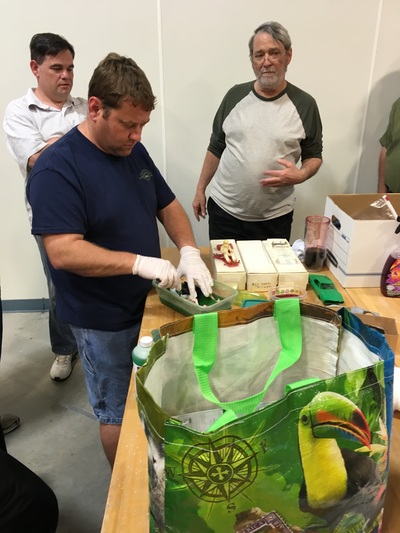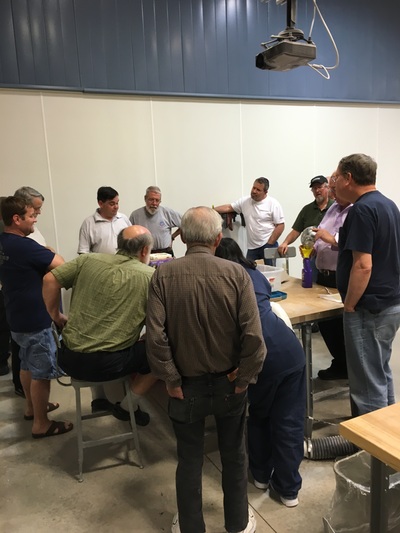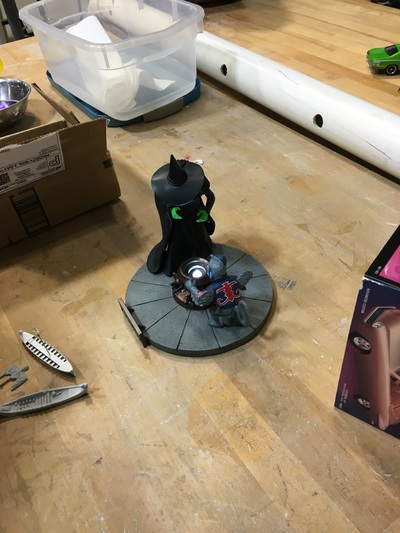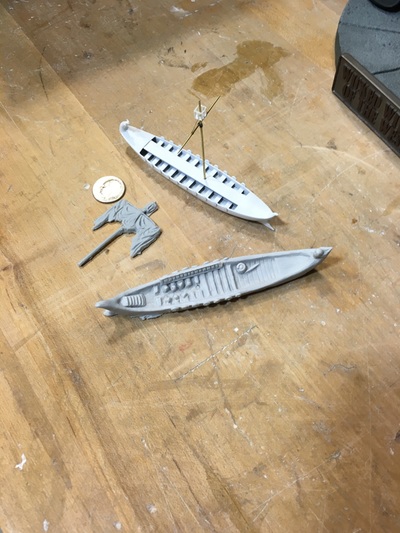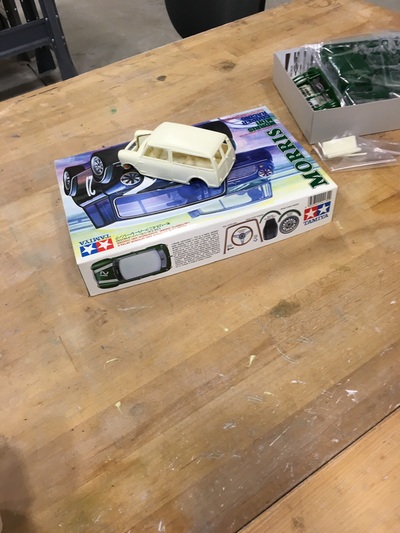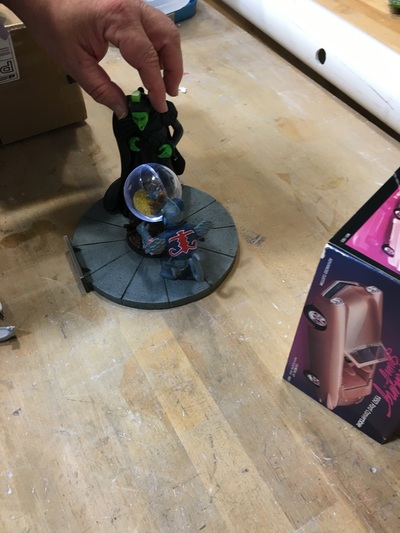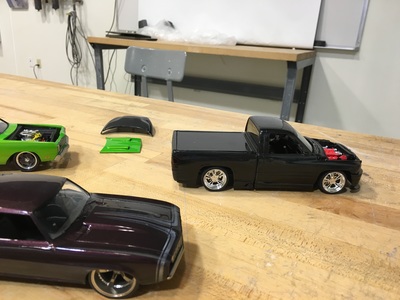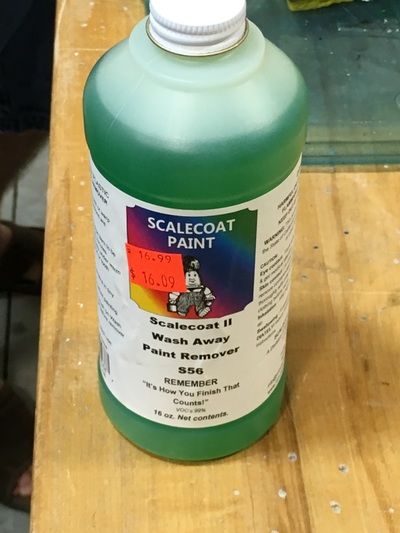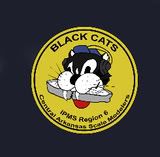|
On our way to AMPS Atlanta show we stopped by Ft. Benning. Most of the armor pieces from Ft. Knox and Aberdeen proving grounds are stored there now awaiting a new Armor Museum. The photos I took focused more on details that are not easily found in reference books rather than entire vehicles. The old maintenance garage featured in some of the photos is original to 1940s Era IIAD when Patton was in command. He himself strolled the floors of that large garage building. -Kenneth C
0 Comments
IT'S SHOW TIME!!! Well... Almost. The show is less than 2 weeks away. So here's an update on everything you need to know. If this doesn't answer all your questions, please let us know. -Brianna Childres Show Info: Date: Sept 24 Registration: 9a-12p Awards: 4:30p (approx) Venue: Statehouse Convention Center - Ballroom Address: 101 E. Markham St., Little Rock, AR, 72201 Parking:Deck: Statehouse Parking Deck Location: 201 Main St, Little Rock, AR 72201 *Bring ticket to registration desk to be validated and only pay $5 for all day! Registration: Adult - $10 for one (1) and $2 for each additional model Juniors (13-18) - $4 for one (1) and $1 for each additional model Kids (12 and under) - Free for the first one and $1 for each additional model *IPMS Members get a discount! Themes:
Judging:Our show is judged on a Gold, Silver, Bronze basis. Special Awards are then chosen from eligible gold medal recipients. Battle of Champions: Entries for this special award are separate from the general entries as this is a fundraiser. All proceeds from entries to this award will go to Jacksonville Museum of Military History. Donations will also be taken at the registration desk.
Entry Fee: $5 for 1 model, 3 models maximum Model Eligibility: Must have won a special award at a contest* (Example: "Best of Category", "Best of Show", "Theme Award", etc.) or 1st/Gold at AMPS/IPMS Nationals. *Modelers are encouraged to bring award to display with the model. Judging: Winning model will be chosen by an outside IPMS and AMPS representative. On June 3-5, Heather and I, along with Rusty Nail, Josh & Janel Swift, and Ron Leker, attended the Wonderfest Hobby Expo in Louisville, Kentucky. Brian Elliot and Jessy Nail entered the contest by proxy.
Wonderfest is full weekend event that focuses on figures and vehicles in the sci-fi, horror, fantasy, and comic book genres. There are also categories for dinosaurs, kaiju (large monsters, such as Godzilla), props, and dioramas. The show features several classes and demos, movies, and celebrity guests. Sponsors for the show include Amazing Figure Modeler Magazine, Iwata, Starship Modeler, Blackheart Enterprises, and CultTVman. On Friday, Josh and I attended a full day class presented by Blackheart Enterprises and Badger Airbrushes. Instructors for the class were AFM writers Jeff Camp and Gordon Oberman. The class included the 1:2 scale bust, Angelique, and a Badger Xtreme Airbrush, along with modeling supplies such as paint and metallic waxes. Ron Leker attended a sculpting class, taught by Scott Whitworth, which taught participants to sculpt a dragon head. We all 3 enjoyed the classes and picked up a few new things. The contest started on Saturday, and by the end of registration, there were 616 models entered! As usual, there was a lot of fantastic work on the table. The contest room was so full of people that I had to wait until Sunday to take photos. Ron and I entered the contest, along with Brian’s and Jessy’s proxy entries. Rusty is part of the judging staff for this show, so he displayed several of his pieces but did not enter. Photographers from Fine Scale Magazine were there taking photos. They wanted pictures of my C-57D, and asked me to fill out their information sheets. Hopefully, the pictures will appear in their pages sometime in the future. Numerous demos, each being about an hour long, were given throughout the weekend. These are always great opportunities to learn new techniques, and I attended one of painting eyes, and another on building and painting the Millennium Falcon. The vendor’s room was packed, as usual, and many incredible models were for sale. I believe we all spent a little too much here, but it wouldn’t be Wonderfest if we didn’t! I also got to meet actor Nick Tate, who is best known for his role as Alan Carter on the TV series, Space: 1999. This was one of the highlights of the weekend for me. Of course, the best part of Wonderfest is the people who attend. After going to this show several years, I have made many friends there, and it is always fun to catch up with them, check out their work, and just enjoy spending time with fellow modelers from across the world. The weekend ended with the Awards Ceremony on Sunday. Although the judging was tough, all CASM members that entered did received awards. The contest results are listed below. Overall, it was another great Wonderfest, and because of all the great modelers, events, demos, and vendors, there isn’t another show like it! Now, to get started on entries for next year… Wonderfest 2016 show results Jessy Nail: Silver-Papp & His Two Sons (junior) Ron Leker: Bronze-Sinister Minister Merit-Cylon Raider Brian Elliot: Merit-Tesla Tank Merit-Tiger Walker Brent Bristow: Gold-Knight Rider Silver-Luna Bronze-C-57D Space Cruiser Merit-Dottie Storm These days, model builders want their painted, finished product to have that quality of eye-appeal often referred to as “pop.” To that end, modelers now employ filters, color modulation, pin washes, etc., etc., in an effort to make their work “stand out,” and almost literally grasp viewers by the eyeballs and demand their attention.
A miniature figure, aircraft, ship, vehicle, or other scale model does indeed need a certain degree of attention to the exaggeration of highlights and shadows; otherwise it will look bland and toy-like. The smaller a model is compared to the real item, the truer this is. But shading and highlighting can be overdone, and overdone to the extent that a thing this author calls an “artsy-fartsy” effect is produced. The truest sign that one is viewing a model project guilty of the artsy-fartsy effect is the thought “Boy, that sure looks cool!” followed by a nagging realization that as cool as it may appear, its finish is not truly realistic. The artsy-fartsy effect comes about in two ways: An overwhelming desire to give a model that quality of “pop,” an excessive love of finishing and weathering techniques, or both. Artsy-fartsyness can be found in many areas of modeling, but I shall confine my comments on the phenomenon to the area with which I am most familiar—the ever-popular field of World War II armor. Examination of period photographs, many of admittedly poor quality, reveals some common features regarding the appearance of wartime armor. Chief among these features is dirt—dirt, dust, and mud, closely followed by general grubbiness, scuffed and worn paint, and greasy handprints. What is not often seen on the real thing, but frequently featured on scale model versions of Second World War fighting vehicles is extensively scratched and chipped paint. One American veteran of the war in Europe described derelict German vehicles he encountered as most closely resembling yellowish, formerly-mobile clumps of earth. These vehicles were not, evidently, color-modulated, pin-washed, “pretties,” nor did they feature large amounts of scratched and chipping paint. Why would this be so? During the war in Europe, a German tank in a combat area that reached an age of three months would have been considered an old veteran. Through the very last days of the war, the Germans destroyed Soviet armor at a prodigious rate, so a three-month old Russian tank would have been even more of a rarity. Because of greatly superior numbers, general durability, and tremendous air and artillery support, American armor enjoyed a greater average lifespan, but even U.S. Shermans rarely sported tremendous paint damage. AFVs (armored fighting vehicles) do take a beating in combat. They quickly take on layers of dirt and dust, and fenders, stowage boxes, and other non-armored parts rapidly become dented, shredded, or go missing entirely. Favored locations for climbing on and off vehicles become worn, as do areas around crew and access hatches. But excessive, random scratching and general failure of an AFV’s paint job? Not so much. There are a couple of situations in which weathering of vehicles does occur at an accelerated rate, these being the climate extremes of desert and jungle. In deserts, sun and blowing sand will degrade paint jobs faster than in temperate zones. In a tropical setting (Burma, Guadalcanal, etc.) sun, moisture, and plowing through dense foliage will contribute to faster than normal weathering. But even when depicting vehicles in such settings, average service life should be considered. Would there be time for extreme paint degradation and other damage to occur? The verdict of this writer and model builder is that, while exaggerated painting and weathering techniques may have a lot of visual appeal, too often these days, realism is taking a back seat to artistic license. A lot of current finishing techniques may be fun to apply and may look great, but its way too easy to overdo. Less can be more. On Saturday, May 21, Matt Bond, Ron Leker, and I traveled to Bossier City, Louisiana to attend RiverCon V. This model show is hosted by the Red River Modelers, an IPMS club based in Shreveport. The show had previously been scheduled for March of this year, but had to be re-scheduled to May 21 due to flooding in the area. Fortunately, it was a beautiful day for a road trip, and we had no problems getting to the Bossier Civic Center, where the event was held.
Upon arriving, we saw fellow CASM members Ray Smith, Cliff Bullock, Bob and Mona Hiatt, and Brian and Roy Elliott. Also participating by proxy was Robert Garten, Taryn Garten, and Ken Childres. Several other clubs were represented, including modelers from Baton Rouge, Dallas, and Houston. According to the Red River Modelers Facebook page, there were over 60 contestants with 298 entries! The room at the Bossier Civic Center was quite large with excellent lighting. Even with 298 entries, there was plenty of table space. If they keep this venue, they will have room for a little more growth. There were several vendors with quite a selection of merchandise, and a wide variety of subjects was available. Our old friends John Struck and Robert Blum from John’s Models were attending as vendors, as well. There were several nice items in the raffle, and the raffle was set up with the kits split into different categories (aircraft, automotive, etc.). Participants could put their tickets into the drawing for a particular category to increase their chances of winning a kit in which they were interested. They also had a $5 raffle with more valuable items, similar to the $5 raffle CASM had at our show last year. The awards given at the show were very nice. For the category awards, winners were given “challenge coins,” which are metal printed coins. They also came with clear protective pouches. The size allows you to display the award with your model without taking up much shelf space. For the “best of” awards, they gave larger, acrylic awards. Overall, it was great show, and we all had a good time. And I am very happy to report that CASM collectively brought home 41 awards from this show! Here is a list of what each member won. Brent Bristow-1st place, Fantasy Figures 1st and 3rd place, Figures Busts 1st place, 1/32 scale automotive 1st place, Sci-Fi Vehicles Theme Award “As Seen On TV” Matt Bond-1st place, Closed Top AFVs 3rd place, Armored Cars and Half-tracks 1st place, Hypothetical Space and Sci-Fi Vehicles Best Sci-Fi Ron Leker-2nd and 3rd place, Sci-Fi Vehicles 2nd place, Military Vehicles Scratch-Built 2nd place, Open Top AFVs 2nd place, Closed Top AFVs (split) Ray Smith-1st place,Triathlon 1st and 3rd place, Humor in Modeling 1st and 2nd place, Paper Models Cliff Bullock-3rd place, Open Top AFVs Bob Hiatt-1st and 2nd place, Battleships 2nd and 3rd place, Small Scale Military 1st, 2nd, and 3rd place, Destroyers Mona Hiatt-1st place, Commercial Ships 3rd place, Soft-skin Military Vehicles 3rd place, Artillery Pieces 2nd place, Collections Brian Elliot-2nd place, Airships 3rd place, Military Vehicles Scratch Built 2nd place, Sci-Fi Scratch-Built Ken Childres-2nd place, Closed Top AFVs (split) Robert Garten-3rd place, motorcycles 2nd and 3rd place, Automotive Technology Taryn Garten-1st place, Juniors Automotive Best Junior We had another great meeting this weekend, getting through several pieces of club business in record time. Josh Swift gave us a great demo on lighting models, and, as usual, there were several amazing pieces in the Show-N-Tell. As Ken is understandably busy elsewhere, I'm filling by providing some photos. The quality of my pics may not be as good as Ken's, but hopefully you will enjoy them anyway!-Brent
There is little doubt the Mike Rinaldi’s Tank Art book series has made quite an impact on the model community. His in-depth explanations of model painting techniques serve to both instruct and inspire us. I have several of the Tank Art books in my collect and refer to them often. I have a confession to make though, I rarely read instructional books or reference books from cover to cover. More often than not I scan the pages and pick out things that catch my eye and read that specific part. However, when I received Mike’s SM02 book I decided to read it cover to cover and so I did over the course of a few days.
The Single Model series of books are very similar in layout and design to the Tank Art series. Large clear pictures and detail shots are present throughout. There is a brief section on the importance of looking at your surroundings and collecting references. A few pages of clear reference photos serve as an example. The specific book I got was SM.02 about the S-65 Tractor. The book actually covers two models of the same subject. One of the main focuses of the book was on the “Windex Removal Technique” for chipping paint. Mike is quick to give credit to other modelers that came up with the technique. The author lets you tag along as he learns the ins and outs of a technique that he admittedly has little experience with. He shows you what worked and what didn’t as he experiments which could be a huge time saver for other modelers. The balance of the book covers the OPR or Oil Paint Rendering technique, Chipping with Hairspray and using Pigments in a very controlled and precise fashion. One thing I really loved about this book was it’s simplicity. With the Tank Art books there is a HUGE amount of information and theory to go along with every step. The SM books ratchet this back and concentrate on the Why and How of every step. Personally I feel like this is the perfect balance. Many, if not most, other publications completely skip the WHY and only tell you HOW… I believe that is a mistake but I also understand the need for brevity in a magazine article. So I really feel like the SM format hits the nail on the head. It gives you all of the information you need to successfully replicate a technique but also tells you why you’re doing it without being a long and tiring read. I can whole heartedly recommend this book to both new and seasoned modelers. I look forward to more from this series! Article originally published on Armorama By Brent Sauer
M1A2 SEP Abrams Main Battle Tank Sabot Publications The United States M1 Abrams entered service in 1980. It began stalking the modern battlefield as the M1A1 Abrams variant in Saudi Arabia, Kuwait and Iraq during Operation Desert Storm in 1991. The M1A1 Abrams dominated combat operations and was undefeated when facing Iraqi T-55’s, T-62’s and T-72’s. In an effort to stay ahead of Russian armored development, the M1A1 was improved with the addition of internal GPS and a Commanders Independent Thermal Viewer amongst other improvements resulting in the M1A2. Additional improvements resulted in the M1A2 System Enhancement Package (SEP) and the M1A2 SEPv2. The model kit market was devoid of an M1A2 SEP Abrams kit until Dragon added parts and re-boxed their original M1A2 kit in 2007 resulting in the Dragon M1A2 SEP kit # 3536. The Dragon M1A2 SEP was the only kit on the market until Tamiya released their M1A2 SEP TUSK II kit # 35326 in 2012. The release of this kit gave the model builder an economical option to build a TUSK variant Abrams at a reasonable price. Up to the time that the Tamiya M1A2 SEP TUSK II kit was released, the only option for building a TUSK Abrams was purchasing one of the expensive Perfect Scale Modelbau or Legend TUSK conversions. In response to the Tamiya kit, Dragon upgraded their M1A2 SEP with new parts to represent the current M1A2 SEPv2 as kit # 3556 in 2014. Tiger Model released kit # 9601 which was a 1:72nd M1A2 SEP TUSK II in 2015. As the M1A2 Abrams kit and accessory market continued to expand through 2015 and early 2016, the production of references has not kept up. Tankograd, as part of the their ‘American Special’ line released # 3009 ‘M1A1/M1A2 SEP TUSK Abrams’ book in 2008. This book was 64 pages. In 2014, Tankograd published another book as part of their ‘Fast Track’ series. It was titled ‘M1A2 SEPv2 Abrams’ and was a limited edition. This book was only 40 pages and has been out of print for some time. In 2016, after identifying a need in the hobby market, renowned model builders and authors Chris Mrosko and Brett Avants started SABOT Publications. SABOT Publications goal is to produce high quality photographic references for various combat systems. Just in time for the 2016 release of no fewer than three new M1A2 SEP TUSK model kits: 1. Meng 1:35th M1A2 TUSK I & TUSK II kit # TS-026 (March 2016) 2. Ryefield Models 1:35th M1A2 SEP TUSK I, TUSK II kit # RM 5004 (March 2016) 3. Academy M1A2 SEP TUSK I, TUSK II and SEPv2 kit # 13298- (TBD 2016) SABOT publications, in cooperation with MENG Models, released their first book titled “M1A2 SEP Abrams Main Battle Tank In Detail” on April 6th, 2016. “M1A2 SEP Abrams Main Battle Tank In Detail” is a ‘must have’ reference for anybody interested in building a model of the M1A2 SEP Abrams and its TUSK variations. This book is also perfect to have sitting on your shelf if you just want a first class reference on the M1A2 SEP. To produce this book, SABOT Publications put together a rock star team of military veterans, subject matter experts, and hobby industry professionals. The book is in an 8-1/2” x 11” format, soft cover, 104 page color publication with nearly 300 photographs, color plates and line drawings. The book starts out with two pages of history and technical data on the M1A2 SEP. SABOT Publications did a great job of maintaining balance with the history and technical data which gives the reader enough information to understand the system and its capabilities but doesn’t lose you in extensive technical discussion. Twenty-eight pages of the publication are M1A2 SEP ‘In Action’ photographs. The photographs in this section captured operational images from places such as Iraq, South Korea, Germany and Bulgaria to name a few. These photographs are a great source for detailed views of crew field gear stowage, weathering effects and details of onboard equipment such as smoke grenade launchers, CROWS, and mine rollers. The balance of the book is devoted to ‘Walkaround’ photographs. A majority of the pages in the ‘Walkaround’ section contain two large 4” x 8” color images. Each photograph has a detailed caption which informs the reader of the significant details shown in each photo. The amount of photos and details shown are staggering and unmatched in printed sources. The reader gets up close and personal with the M1A2 SEP, M1A2 SEP TUSK I and M1A2 TUSK II. You get VIP access to everything from the interior of the armored side skirts, detailed views of TUSK I reactive armor boxes and TUSK II armor tiles, tank interior details and the protective armored gun shield for the loaders M240 machine gun. You even get to see the inside of the smoke grenade storage boxes!! The number of photographs and details captured will keep the scratch builder and rivet counter busy for hours. This first effort from SABOT Publications is an absolute success. You will not find a better, more detailed book on the M1A2 SEP and its TUSK variants. The quality, clarity and detail of the photographs is second to none. You need to find this book at your favorite hobby retailer right away and make your purchase as the production run was limited and available inventory is quickly selling out. Many of you folks in CASM have seen that we lost one of our own last weekend with the passing of Noel Lawson. Most of you knew him as the, "...grumpy guy in the wheelchair." A few of you knew him as an excellent modeler, but few of you had the chance to really know him for all he was.
I first met Noel in 1977 when I first attended a model club meeting and contest at Jack's Hobby Shop, now Rail and Sprue Hobbies, in Jacksonville. Noel was one of the members of the Central Arkansas Modelers Society, along with Dave Branson Sr., Rick Taylor, Joe Rader, Jim Brown, Frank McCurdy, and about 20 others. As with CASM today, this original IPMS group had a pretty impressive collection of modelers. Rarely did the group fail to bring home more than its fair share of awards from a competition, regardless of the level. Over the years, I became a regular at the club and I got to know Noel better. As he told me once, "After I saw Mary (Branson) had accepted you, I figured you must be alright." When I first became part of the club, Noel's interest was primarily in aircraft. During this time, I learned some about Noel, the man. At the time he was a physician and instructor at the University of Arkansas Medical School in Little Rock. He was a graduate of Hendrix College in Conway, where he had been born and raised. During the Vietnam War, he served in the Navy as a Flight Surgeon on board the USS FD Roosevelt and the USS JFK as part of Carrier Group One, including off the coast of Vietnam. Following his return home, he completed his residency in anesthesiology at the University of Missouri Medical School at Columbia. Noel's medical work, research, innovation, experience, and exploits were far ranging, and much greater than I can understand, earning him a place in the University of Arkansas College of Medicine Hall of Fame in 2012. His work as an artist was also wide ranging. Noel's abilities and expertise in watercolor paintings was well known and appreciated by many. Back now to what most of us knew him for -- his modeling. Noel was a member of several modeling groups through the years, including IPMS, in which his membership number held only four digits, and he belonged to the Verlinden-Letterman-Stok (VLS) Eagle Squadron, where he had earned the title of Master Modeler. His works and articles had appeared in many modeling magazines, including both his aircraft and his figures. I am proud to say that much of Noel's interest in figures came about when I began showing my own figures at CASM meetings. But his abilities and love of this hobby went far beyond anything I ever could have done. We still often talked about our enjoyment of this hobby and the various techniques and methods, not just the newest and hottest. I will miss him; he was a friend, a colleague, a confidant, and much more. I wish all of you could have known him as I did. ==================== Noel Walter Lawson (1939 - 2016) Noel Walter Lawson, M.D., 76, passed away on March 19, 2016 in Little Rock, Arkansas. A retired cardiac anesthesiologist, he was born July 7, 1939 to the late Marvin and Bessie Arnold Lawson of Conway. He was the grandson of the late Walter Washington and Nettie Ragsdale Lawson of Imboden, Arkansas and William Noel and Effie Peebles Arnold of Williford, Arkansas. Dr. Lawson married Carol Ann Buchanan of Plainview, Texas in 1974. Dr. Lawson attended Conway Public Schools, graduating from Conway High School in 1957. He was the fourth sibling of his family to attend Hendrix College, graduating from there in 1961 with the Biology Prize and a bachelor's degree in Biology. He graduated with honors from the University of Arkansas School of Medicine in 1965. Lawson served his internship at Duval Medical Center in Jacksonville, Florida in 1966. He then entered the Naval Aerospace Medical Institute at Pensacola, Florida in 1966 where he proudly served as a Navy Flight Surgeon, Carrier Air Group One, on the U.S.S. F. D. Roosevelt and U.S.S. J. F. Kennedy from 1967 to 1969. He completed his residency in anesthesiology at The University of Missouri –Columbia in 1970. He received a Cardiovascular Anesthesia Fellowship from the Baylor School of Medicine, Houston, Texas in 1971 where he was Assistant Clinical Instructor and served under heart surgeon, Dr. Michael DeBakey. He then became Director of Cardiac Anesthesiology and Director of the Surgical Intensive Care Unit at the Ochsner Medical Center in New Orleans from 1972 to 1974. In 1974 Dr. Lawson became an Associate Professor of Anesthesiology and Director of the Intensive Care Unit at the University of Arkansas For Medical Sciences in Little Rock, Arkansas. He also created its Emergency Medical Technicians school. He became a Professor of Anesthesiology in 1980, a position he later held at the Texas Tech University Health Science Center in Lubbock, Texas from 1981 to 1983, and again at the University of Texas Medical Branch in Galveston, Texas from 1983 until 1992. In 1992 Lawson became the Russell D. Shelden Professor of Anesthesiology at the University of Missouri. A position he held until 1994 before becoming Chairman of the Department of Anesthesiology and Perioperative Medicine. He held the Shelden Endowed Chair until 2004, and became Emeritus Professor of Anesthesiology upon his retirement. Dr. Lawson was active in many fields of research during his career including Age Changes, Pulmonary Physiology, and open heart surgery techniques. He was Vice-President of the Program Committee for the 3rd Japan-American Congress, Oita, Japan, and held chairmanships in the 4th and 5th Congresses in San Francisco and Matsuyama, Japan. His work helped establish ongoing cooperation in American – Japanese anesthesia collaboration. His professional writings were extensive and he was inducted into the University of Arkansas College of Medicine Hall of Fame in 2012. Lawson was preceded in death by his parents; his wife, Carol Ann Lawson; and a brother, Wilbur Glenn Lawson M.D. He is survived by his son, James Buchanan Lawson (Lauren), and grandchildren, Walter Raymond Lawson and Charles Raymond Lawson of Tulsa, Oklahoma; a daughter, Nöel Lawson; brothers, Marvin Arnold Lawson of Arkadelphia, Arkansas and James Larry Lawson M.D. (Nikki) of Little Rock; and a sister, Vivian Lawson Hogue (Gerald) of Conway. He is also survived by nephews Arnie Lawson, Alan Lawson, Jay Lawson and Robert Lawson Adams; and nieces Rhonda Crouch, Kathryn Griffin, Carole Lang, and Amy Adams. A great-nephew, Ryan Lawson, also survives whom he was quite fond of. Dr. Lawson will be remembered not only for his professional accomplishments, but for his exceptional artistic and musical talents. He was a member of the American Watercolor Society and an accomplished and award-winning painter of miniature figures and fine scale models of a historical and military nature. Lawson was an amazing mind, warrior for Christ, and gracious man who will be sincerely missed by those who knew him well. A memorial service for Dr. Lawson will be held at 3:00 p.m. on Friday afternoon, April 15th at St. James United Methodist Church, 321 Pleasant Valley Drive in Little Rock, Arkansas. The service will be open to the public. In lieu of flowers memorials may be made to the Marvin and Bessie Lawson Scholarship, University House 300, U of A, Fayetteville, AR 72701-1201. Here are some photos from the March 14, 2016 meeting of the model classes held at Pulaski Tech. Dave Branson and John Williams gave a demo on stripping paint and chrome plating off of plastic parts.
The class meets on the 2nd and 4th Monday nights of the month at 6:00 p.m. at the PTC campus next to the Little Rock Airport.-Brent Bristow |
Archives
February 2017
|
